Did you know that "Ori and the Will of the Wisps" stole a bunch of mechanics from "Hollow Knight"?
 https://abs.twimg.com/emoji/v2/... draggable="false" alt="🌿" title="Kräuter" aria-label="Emoji: Kräuter">In this thread I will expose some of them.
https://abs.twimg.com/emoji/v2/... draggable="false" alt="🌿" title="Kräuter" aria-label="Emoji: Kräuter">In this thread I will expose some of them.
#gamedev #gamedesign #OriAndTheWillOfTheWisps #HollowKnight #Ori
#gamedev #gamedesign #OriAndTheWillOfTheWisps #HollowKnight #Ori
Sorry for the clickbait  https://abs.twimg.com/emoji/v2/... draggable="false" alt="😅" title="Lächelndes Gesicht mit offenem Mund und Angstschweiß" aria-label="Emoji: Lächelndes Gesicht mit offenem Mund und Angstschweiß">
https://abs.twimg.com/emoji/v2/... draggable="false" alt="😅" title="Lächelndes Gesicht mit offenem Mund und Angstschweiß" aria-label="Emoji: Lächelndes Gesicht mit offenem Mund und Angstschweiß">
What I really mean is that Ori and the Will of the Wisps ADAPTED some mechanics from Hollow Knight.
What I really mean is that Ori and the Will of the Wisps ADAPTED some mechanics from Hollow Knight.
In videogames, like any other form of art, creators "copy" or take inspiration from other games.
However, is not that simple, you can’t just "copy" a mechanic, you must adapt it to your game and make it your own.
However, is not that simple, you can’t just "copy" a mechanic, you must adapt it to your game and make it your own.
Let& #39;s look at the release dates:
 https://abs.twimg.com/emoji/v2/... draggable="false" alt="🔸" title="Kleine orangene Raute" aria-label="Emoji: Kleine orangene Raute">2016 -> Ori and the Blind Forest
https://abs.twimg.com/emoji/v2/... draggable="false" alt="🔸" title="Kleine orangene Raute" aria-label="Emoji: Kleine orangene Raute">2016 -> Ori and the Blind Forest
 https://abs.twimg.com/emoji/v2/... draggable="false" alt="🔸" title="Kleine orangene Raute" aria-label="Emoji: Kleine orangene Raute">2017 -> Hollow Knight
https://abs.twimg.com/emoji/v2/... draggable="false" alt="🔸" title="Kleine orangene Raute" aria-label="Emoji: Kleine orangene Raute">2017 -> Hollow Knight
 https://abs.twimg.com/emoji/v2/... draggable="false" alt="🔸" title="Kleine orangene Raute" aria-label="Emoji: Kleine orangene Raute">2020 -> Ori and the Will of the Wisps
https://abs.twimg.com/emoji/v2/... draggable="false" alt="🔸" title="Kleine orangene Raute" aria-label="Emoji: Kleine orangene Raute">2020 -> Ori and the Will of the Wisps
When you compare some of the changes they implemented from Ori 1 to Ori 2, you can see that some of them were already present on Hollow Knight.
When you compare some of the changes they implemented from Ori 1 to Ori 2, you can see that some of them were already present on Hollow Knight.
And they did well on taking inspiration from Hollow Knight since is one of the best Metroidvanias.
 https://abs.twimg.com/emoji/v2/... draggable="false" alt="🤔" title="Denkendes Gesicht" aria-label="Emoji: Denkendes Gesicht"> But wait, first I should explain what is a Metroidvania; in short it is a videogame subgenre.
https://abs.twimg.com/emoji/v2/... draggable="false" alt="🤔" title="Denkendes Gesicht" aria-label="Emoji: Denkendes Gesicht"> But wait, first I should explain what is a Metroidvania; in short it is a videogame subgenre.
Which is named after 2 games: Metroid and Castlevania Symphony of the Night.
They share some main mechanics and design:
 https://abs.twimg.com/emoji/v2/... draggable="false" alt="▪️" title="Schwarzes kleines Quadrat" aria-label="Emoji: Schwarzes kleines Quadrat"> Large interconnected map
https://abs.twimg.com/emoji/v2/... draggable="false" alt="▪️" title="Schwarzes kleines Quadrat" aria-label="Emoji: Schwarzes kleines Quadrat"> Large interconnected map
 https://abs.twimg.com/emoji/v2/... draggable="false" alt="▪️" title="Schwarzes kleines Quadrat" aria-label="Emoji: Schwarzes kleines Quadrat"> Non-linear path with backtracking
https://abs.twimg.com/emoji/v2/... draggable="false" alt="▪️" title="Schwarzes kleines Quadrat" aria-label="Emoji: Schwarzes kleines Quadrat"> Non-linear path with backtracking
 https://abs.twimg.com/emoji/v2/... draggable="false" alt="▪️" title="Schwarzes kleines Quadrat" aria-label="Emoji: Schwarzes kleines Quadrat"> A skill/item is required to reach some areas
https://abs.twimg.com/emoji/v2/... draggable="false" alt="▪️" title="Schwarzes kleines Quadrat" aria-label="Emoji: Schwarzes kleines Quadrat"> A skill/item is required to reach some areas
They share some main mechanics and design:
Although the subgenre has evolved, and we can see 3D or not platforming games considered Metroidvanias  https://abs.twimg.com/emoji/v2/... draggable="false" alt="👾" title="Außerirdisches Monster" aria-label="Emoji: Außerirdisches Monster">
https://abs.twimg.com/emoji/v2/... draggable="false" alt="👾" title="Außerirdisches Monster" aria-label="Emoji: Außerirdisches Monster">
There is an ongoing discussion about what can be considered a Metroidvania or not.
There is an ongoing discussion about what can be considered a Metroidvania or not.
We can see by the very start that both Ori and Hollow Knight are based in Metroid and Castlevania as many other Metroidvanias.
Even if both games, Ori and Hollow Knight, share subgenre, they offer a very distinct experience and have a different target in mind:
Even if both games, Ori and Hollow Knight, share subgenre, they offer a very distinct experience and have a different target in mind:
One of Ori’s pillars is “BEAUTY”:
 https://abs.twimg.com/emoji/v2/... draggable="false" alt="▪️" title="Schwarzes kleines Quadrat" aria-label="Emoji: Schwarzes kleines Quadrat">It has an outstanding art and soundtrack.
https://abs.twimg.com/emoji/v2/... draggable="false" alt="▪️" title="Schwarzes kleines Quadrat" aria-label="Emoji: Schwarzes kleines Quadrat">It has an outstanding art and soundtrack.
 https://abs.twimg.com/emoji/v2/... draggable="false" alt="▪️" title="Schwarzes kleines Quadrat" aria-label="Emoji: Schwarzes kleines Quadrat">The movement of the main character is fluid and smooth.
https://abs.twimg.com/emoji/v2/... draggable="false" alt="▪️" title="Schwarzes kleines Quadrat" aria-label="Emoji: Schwarzes kleines Quadrat">The movement of the main character is fluid and smooth.
 https://abs.twimg.com/emoji/v2/... draggable="false" alt="▪️" title="Schwarzes kleines Quadrat" aria-label="Emoji: Schwarzes kleines Quadrat">Happy ending story
https://abs.twimg.com/emoji/v2/... draggable="false" alt="▪️" title="Schwarzes kleines Quadrat" aria-label="Emoji: Schwarzes kleines Quadrat">Happy ending story
 https://abs.twimg.com/emoji/v2/... draggable="false" alt="▪️" title="Schwarzes kleines Quadrat" aria-label="Emoji: Schwarzes kleines Quadrat">The game is not too difficult
https://abs.twimg.com/emoji/v2/... draggable="false" alt="▪️" title="Schwarzes kleines Quadrat" aria-label="Emoji: Schwarzes kleines Quadrat">The game is not too difficult
Meanwhile, we could say that Hollow Knight is “UGLY”:
 https://abs.twimg.com/emoji/v2/... draggable="false" alt="▪️" title="Schwarzes kleines Quadrat" aria-label="Emoji: Schwarzes kleines Quadrat"> Oppressive and dark environments a
https://abs.twimg.com/emoji/v2/... draggable="false" alt="▪️" title="Schwarzes kleines Quadrat" aria-label="Emoji: Schwarzes kleines Quadrat"> Oppressive and dark environments a
 https://abs.twimg.com/emoji/v2/... draggable="false" alt="▪️" title="Schwarzes kleines Quadrat" aria-label="Emoji: Schwarzes kleines Quadrat"> Sad story
https://abs.twimg.com/emoji/v2/... draggable="false" alt="▪️" title="Schwarzes kleines Quadrat" aria-label="Emoji: Schwarzes kleines Quadrat"> Sad story
 https://abs.twimg.com/emoji/v2/... draggable="false" alt="▪️" title="Schwarzes kleines Quadrat" aria-label="Emoji: Schwarzes kleines Quadrat"> The main character movement is not fluid
https://abs.twimg.com/emoji/v2/... draggable="false" alt="▪️" title="Schwarzes kleines Quadrat" aria-label="Emoji: Schwarzes kleines Quadrat"> The main character movement is not fluid
 https://abs.twimg.com/emoji/v2/... draggable="false" alt="▪️" title="Schwarzes kleines Quadrat" aria-label="Emoji: Schwarzes kleines Quadrat"> The player will have to get skilled to beat all the hazards and strong bosses
https://abs.twimg.com/emoji/v2/... draggable="false" alt="▪️" title="Schwarzes kleines Quadrat" aria-label="Emoji: Schwarzes kleines Quadrat"> The player will have to get skilled to beat all the hazards and strong bosses
However, the art style is beautiful and cute https://abs.twimg.com/emoji/v2/... draggable="false" alt="☺️" title="Lächelndes Gesicht" aria-label="Emoji: Lächelndes Gesicht">
https://abs.twimg.com/emoji/v2/... draggable="false" alt="☺️" title="Lächelndes Gesicht" aria-label="Emoji: Lächelndes Gesicht">
However, the art style is beautiful and cute
So, time to look at some of these mechanics that were translated from Hollow Knight:
An important feature is MAP REVEALING: how does the game show the map of the world?
Is it accessible from the start? You need to buy it? Is it revealed as you advance?
Is it accessible from the start? You need to buy it? Is it revealed as you advance?
In Ori you can reveal the map for an area by finding some Map Stone fragments and inserting them on a Map Stone.
In Hollow Knight, you can find Cornifer (an NPC) located in each area that will sell you a map of that area.
 https://abs.twimg.com/emoji/v2/... draggable="false" alt="🎵" title="Musiknote" aria-label="Emoji: Musiknote">You have some clues on where to find as he makes a characteristic sound and you can spot a trail of paper pieces on the floor.
https://abs.twimg.com/emoji/v2/... draggable="false" alt="🎵" title="Musiknote" aria-label="Emoji: Musiknote">You have some clues on where to find as he makes a characteristic sound and you can spot a trail of paper pieces on the floor.
So, what did they do for Ori 2? As for HK, there is an NPC called Lupo that sells maps located in each area.
 https://abs.twimg.com/emoji/v2/... draggable="false" alt="🧑🤝🧑" title="Leute halten Händchen" aria-label="Emoji: Leute halten Händchen">We can notice that the number of NPCs from Ori 1 to Ori 2 was highly increased since they wanted to provide a world that feels “alive”.
https://abs.twimg.com/emoji/v2/... draggable="false" alt="🧑🤝🧑" title="Leute halten Händchen" aria-label="Emoji: Leute halten Händchen">We can notice that the number of NPCs from Ori 1 to Ori 2 was highly increased since they wanted to provide a world that feels “alive”.
However, as I said before, they had to adapt the map revealing mechanics to their needs:
 https://abs.twimg.com/emoji/v2/... draggable="false" alt="⚫️" title="Schwarzer Kreis" aria-label="Emoji: Schwarzer Kreis">HK doesn’t show the map of an area if you haven’t bought the map, even if you have already been there.
https://abs.twimg.com/emoji/v2/... draggable="false" alt="⚫️" title="Schwarzer Kreis" aria-label="Emoji: Schwarzer Kreis">HK doesn’t show the map of an area if you haven’t bought the map, even if you have already been there.
 https://abs.twimg.com/emoji/v2/... draggable="false" alt="🔵" title="Blauer Kreis" aria-label="Emoji: Blauer Kreis">Ori will reveal the paths where you’ve already been instantly.
https://abs.twimg.com/emoji/v2/... draggable="false" alt="🔵" title="Blauer Kreis" aria-label="Emoji: Blauer Kreis">Ori will reveal the paths where you’ve already been instantly.
As you can see all these mechanics makes HK harder and slows the pace where the player will need to think where to go and thus encouraging exploration.
While Ori wants to keep the game more accessible and aims for a fluid and smooth traversal.
While Ori wants to keep the game more accessible and aims for a fluid and smooth traversal.
But on objective marking both have the same approach:
 https://abs.twimg.com/emoji/v2/... draggable="false" alt="🟠" title="Orangefarbener Kreis" aria-label="Emoji: Orangefarbener Kreis">In Ori 1 the room/area where the next objective is located was revealed.
https://abs.twimg.com/emoji/v2/... draggable="false" alt="🟠" title="Orangefarbener Kreis" aria-label="Emoji: Orangefarbener Kreis">In Ori 1 the room/area where the next objective is located was revealed.
 https://abs.twimg.com/emoji/v2/... draggable="false" alt="🔵" title="Blauer Kreis" aria-label="Emoji: Blauer Kreis">
https://abs.twimg.com/emoji/v2/... draggable="false" alt="🔵" title="Blauer Kreis" aria-label="Emoji: Blauer Kreis"> https://abs.twimg.com/emoji/v2/... draggable="false" alt="⚫️" title="Schwarzer Kreis" aria-label="Emoji: Schwarzer Kreis">Ori 2 went for the same approach as HK; showing an icon in the map where the objective is, without revealing the whole room/area in the map.
https://abs.twimg.com/emoji/v2/... draggable="false" alt="⚫️" title="Schwarzer Kreis" aria-label="Emoji: Schwarzer Kreis">Ori 2 went for the same approach as HK; showing an icon in the map where the objective is, without revealing the whole room/area in the map.
With this technique you are encouraging exploration, the player has an idea of what direction to follow but doesn’t know for sure what road will lead to the objective.
It is like having a compass https://abs.twimg.com/emoji/v2/... draggable="false" alt="🧭" title="Compass" aria-label="Emoji: Compass">
https://abs.twimg.com/emoji/v2/... draggable="false" alt="🧭" title="Compass" aria-label="Emoji: Compass">
It is like having a compass
This resembles Dirtmouth (the main town of HK).
The idea behind these towns is to have a place where NPCs go back to and offer different services: shops, skill upgrades, etc.
The town evolves as you advance in your adventure, so it is also a representation of your progression
The idea behind these towns is to have a place where NPCs go back to and offer different services: shops, skill upgrades, etc.
The town evolves as you advance in your adventure, so it is also a representation of your progression
However, there is a big difference between Dirtmouth and Well Spring Glades, that is the location in their respective worlds.
The first one is located on the upper part of the map and the second is in the centre. With this change, the feeling of the world changes completely:
The first one is located on the upper part of the map and the second is in the centre. With this change, the feeling of the world changes completely:
But you also unveil more mysteries, the player feels like an archaeologist digging deeper on an excavation. Going back to the surface means going back to safety.
Also, they made some parts of the town inaccessible until you gain a certain ability so the player will want to go back once they’ve gained that ability.
What makes this town more unique is that you can upgrade it by expending money, making more parts accessible and building houses for NPCs, thus making the player feel part of the world.
That would go against HK design, where the player is an external agent to the world.
That would go against HK design, where the player is an external agent to the world.
Probably the COMBAT is one of the main features for Metroidvanias. Do you have a gun, a sword, a whip?
This will also define the behaviour of the enemies.
This will also define the behaviour of the enemies.
But let& #39;s dig deeper and look at secondary attacks:
 https://abs.twimg.com/emoji/v2/... draggable="false" alt="⚫️" title="Schwarzer Kreis" aria-label="Emoji: Schwarzer Kreis">
https://abs.twimg.com/emoji/v2/... draggable="false" alt="⚫️" title="Schwarzer Kreis" aria-label="Emoji: Schwarzer Kreis"> https://abs.twimg.com/emoji/v2/... draggable="false" alt="🔵" title="Blauer Kreis" aria-label="Emoji: Blauer Kreis">In HK you have some especial attacks that will consume some spirit/energy that you gain by defeating enemies, and this happens as well in Ori 2.
https://abs.twimg.com/emoji/v2/... draggable="false" alt="🔵" title="Blauer Kreis" aria-label="Emoji: Blauer Kreis">In HK you have some especial attacks that will consume some spirit/energy that you gain by defeating enemies, and this happens as well in Ori 2.
So here ends the 1st part of this thread, where we have taken a look at:
1. Map https://abs.twimg.com/emoji/v2/... draggable="false" alt="🗺️" title="Weltkarte" aria-label="Emoji: Weltkarte">
https://abs.twimg.com/emoji/v2/... draggable="false" alt="🗺️" title="Weltkarte" aria-label="Emoji: Weltkarte">
2. Objective markers https://abs.twimg.com/emoji/v2/... draggable="false" alt="📍" title="Runde Reißzwecke" aria-label="Emoji: Runde Reißzwecke">
https://abs.twimg.com/emoji/v2/... draggable="false" alt="📍" title="Runde Reißzwecke" aria-label="Emoji: Runde Reißzwecke">
3. Main Hub https://abs.twimg.com/emoji/v2/... draggable="false" alt="🏘️" title="Häuser" aria-label="Emoji: Häuser">
https://abs.twimg.com/emoji/v2/... draggable="false" alt="🏘️" title="Häuser" aria-label="Emoji: Häuser">
4. Main weapon https://abs.twimg.com/emoji/v2/... draggable="false" alt="🗡️" title="Dolchmesser" aria-label="Emoji: Dolchmesser">
https://abs.twimg.com/emoji/v2/... draggable="false" alt="🗡️" title="Dolchmesser" aria-label="Emoji: Dolchmesser">
5. Secondary attacks https://abs.twimg.com/emoji/v2/... draggable="false" alt="🏹" title="Pfeil und Bogen" aria-label="Emoji: Pfeil und Bogen">
https://abs.twimg.com/emoji/v2/... draggable="false" alt="🏹" title="Pfeil und Bogen" aria-label="Emoji: Pfeil und Bogen">
1. Map
2. Objective markers
3. Main Hub
4. Main weapon
5. Secondary attacks

 Read on Twitter
Read on Twitter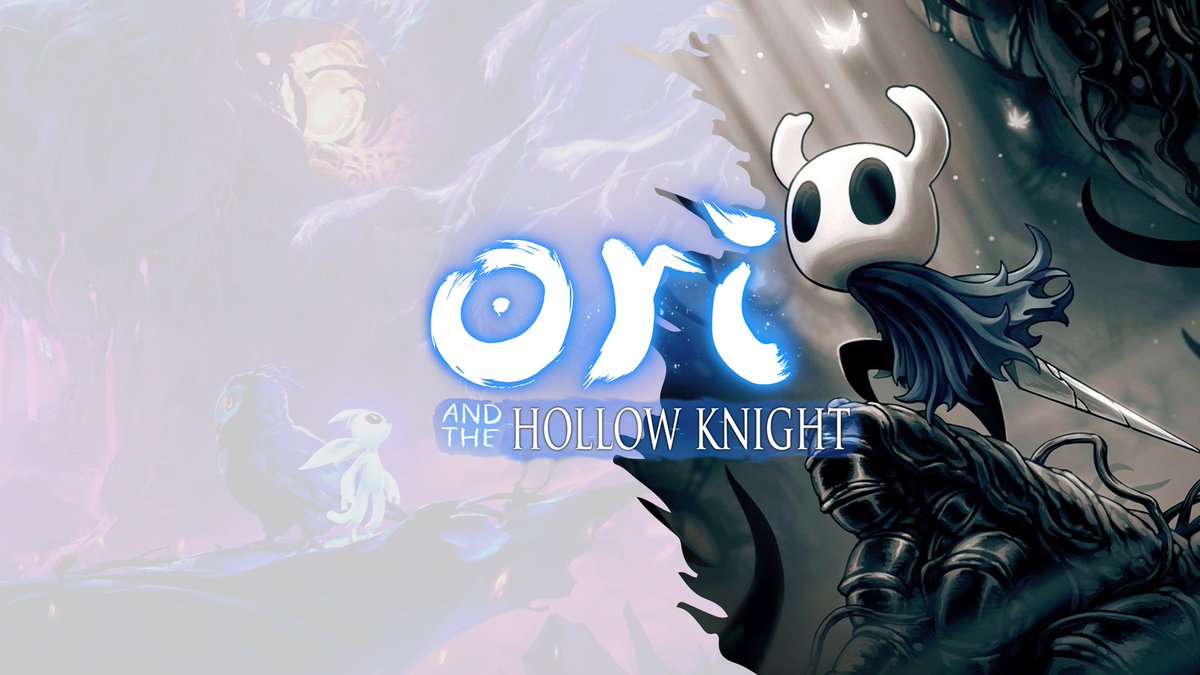 In this thread I will expose some of them. #gamedev #gamedesign #OriAndTheWillOfTheWisps #HollowKnight #Ori" title="Did you know that "Ori and the Will of the Wisps" stole a bunch of mechanics from "Hollow Knight"? https://abs.twimg.com/emoji/v2/... draggable="false" alt="🌿" title="Kräuter" aria-label="Emoji: Kräuter">In this thread I will expose some of them. #gamedev #gamedesign #OriAndTheWillOfTheWisps #HollowKnight #Ori" class="img-responsive" style="max-width:100%;"/>
In this thread I will expose some of them. #gamedev #gamedesign #OriAndTheWillOfTheWisps #HollowKnight #Ori" title="Did you know that "Ori and the Will of the Wisps" stole a bunch of mechanics from "Hollow Knight"? https://abs.twimg.com/emoji/v2/... draggable="false" alt="🌿" title="Kräuter" aria-label="Emoji: Kräuter">In this thread I will expose some of them. #gamedev #gamedesign #OriAndTheWillOfTheWisps #HollowKnight #Ori" class="img-responsive" style="max-width:100%;"/>
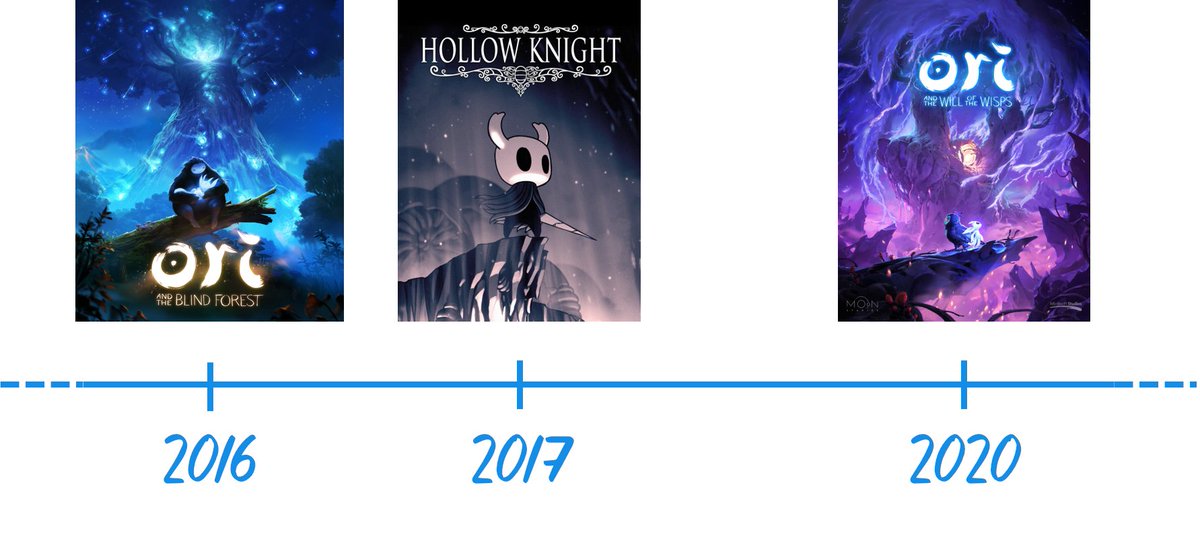 2016 -> Ori and the Blind Foresthttps://abs.twimg.com/emoji/v2/... draggable="false" alt="🔸" title="Kleine orangene Raute" aria-label="Emoji: Kleine orangene Raute">2017 -> Hollow Knighthttps://abs.twimg.com/emoji/v2/... draggable="false" alt="🔸" title="Kleine orangene Raute" aria-label="Emoji: Kleine orangene Raute">2020 -> Ori and the Will of the Wisps When you compare some of the changes they implemented from Ori 1 to Ori 2, you can see that some of them were already present on Hollow Knight." title="Let& #39;s look at the release dates:https://abs.twimg.com/emoji/v2/... draggable="false" alt="🔸" title="Kleine orangene Raute" aria-label="Emoji: Kleine orangene Raute">2016 -> Ori and the Blind Foresthttps://abs.twimg.com/emoji/v2/... draggable="false" alt="🔸" title="Kleine orangene Raute" aria-label="Emoji: Kleine orangene Raute">2017 -> Hollow Knighthttps://abs.twimg.com/emoji/v2/... draggable="false" alt="🔸" title="Kleine orangene Raute" aria-label="Emoji: Kleine orangene Raute">2020 -> Ori and the Will of the Wisps When you compare some of the changes they implemented from Ori 1 to Ori 2, you can see that some of them were already present on Hollow Knight." class="img-responsive" style="max-width:100%;"/>
2016 -> Ori and the Blind Foresthttps://abs.twimg.com/emoji/v2/... draggable="false" alt="🔸" title="Kleine orangene Raute" aria-label="Emoji: Kleine orangene Raute">2017 -> Hollow Knighthttps://abs.twimg.com/emoji/v2/... draggable="false" alt="🔸" title="Kleine orangene Raute" aria-label="Emoji: Kleine orangene Raute">2020 -> Ori and the Will of the Wisps When you compare some of the changes they implemented from Ori 1 to Ori 2, you can see that some of them were already present on Hollow Knight." title="Let& #39;s look at the release dates:https://abs.twimg.com/emoji/v2/... draggable="false" alt="🔸" title="Kleine orangene Raute" aria-label="Emoji: Kleine orangene Raute">2016 -> Ori and the Blind Foresthttps://abs.twimg.com/emoji/v2/... draggable="false" alt="🔸" title="Kleine orangene Raute" aria-label="Emoji: Kleine orangene Raute">2017 -> Hollow Knighthttps://abs.twimg.com/emoji/v2/... draggable="false" alt="🔸" title="Kleine orangene Raute" aria-label="Emoji: Kleine orangene Raute">2020 -> Ori and the Will of the Wisps When you compare some of the changes they implemented from Ori 1 to Ori 2, you can see that some of them were already present on Hollow Knight." class="img-responsive" style="max-width:100%;"/>
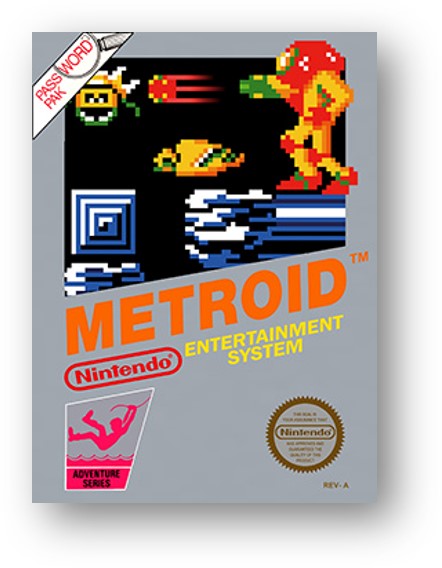 Large interconnected maphttps://abs.twimg.com/emoji/v2/... draggable="false" alt="▪️" title="Schwarzes kleines Quadrat" aria-label="Emoji: Schwarzes kleines Quadrat"> Non-linear path with backtrackinghttps://abs.twimg.com/emoji/v2/... draggable="false" alt="▪️" title="Schwarzes kleines Quadrat" aria-label="Emoji: Schwarzes kleines Quadrat"> A skill/item is required to reach some areas" title="Which is named after 2 games: Metroid and Castlevania Symphony of the Night.They share some main mechanics and design:https://abs.twimg.com/emoji/v2/... draggable="false" alt="▪️" title="Schwarzes kleines Quadrat" aria-label="Emoji: Schwarzes kleines Quadrat"> Large interconnected maphttps://abs.twimg.com/emoji/v2/... draggable="false" alt="▪️" title="Schwarzes kleines Quadrat" aria-label="Emoji: Schwarzes kleines Quadrat"> Non-linear path with backtrackinghttps://abs.twimg.com/emoji/v2/... draggable="false" alt="▪️" title="Schwarzes kleines Quadrat" aria-label="Emoji: Schwarzes kleines Quadrat"> A skill/item is required to reach some areas">
Large interconnected maphttps://abs.twimg.com/emoji/v2/... draggable="false" alt="▪️" title="Schwarzes kleines Quadrat" aria-label="Emoji: Schwarzes kleines Quadrat"> Non-linear path with backtrackinghttps://abs.twimg.com/emoji/v2/... draggable="false" alt="▪️" title="Schwarzes kleines Quadrat" aria-label="Emoji: Schwarzes kleines Quadrat"> A skill/item is required to reach some areas" title="Which is named after 2 games: Metroid and Castlevania Symphony of the Night.They share some main mechanics and design:https://abs.twimg.com/emoji/v2/... draggable="false" alt="▪️" title="Schwarzes kleines Quadrat" aria-label="Emoji: Schwarzes kleines Quadrat"> Large interconnected maphttps://abs.twimg.com/emoji/v2/... draggable="false" alt="▪️" title="Schwarzes kleines Quadrat" aria-label="Emoji: Schwarzes kleines Quadrat"> Non-linear path with backtrackinghttps://abs.twimg.com/emoji/v2/... draggable="false" alt="▪️" title="Schwarzes kleines Quadrat" aria-label="Emoji: Schwarzes kleines Quadrat"> A skill/item is required to reach some areas">
 Large interconnected maphttps://abs.twimg.com/emoji/v2/... draggable="false" alt="▪️" title="Schwarzes kleines Quadrat" aria-label="Emoji: Schwarzes kleines Quadrat"> Non-linear path with backtrackinghttps://abs.twimg.com/emoji/v2/... draggable="false" alt="▪️" title="Schwarzes kleines Quadrat" aria-label="Emoji: Schwarzes kleines Quadrat"> A skill/item is required to reach some areas" title="Which is named after 2 games: Metroid and Castlevania Symphony of the Night.They share some main mechanics and design:https://abs.twimg.com/emoji/v2/... draggable="false" alt="▪️" title="Schwarzes kleines Quadrat" aria-label="Emoji: Schwarzes kleines Quadrat"> Large interconnected maphttps://abs.twimg.com/emoji/v2/... draggable="false" alt="▪️" title="Schwarzes kleines Quadrat" aria-label="Emoji: Schwarzes kleines Quadrat"> Non-linear path with backtrackinghttps://abs.twimg.com/emoji/v2/... draggable="false" alt="▪️" title="Schwarzes kleines Quadrat" aria-label="Emoji: Schwarzes kleines Quadrat"> A skill/item is required to reach some areas">
Large interconnected maphttps://abs.twimg.com/emoji/v2/... draggable="false" alt="▪️" title="Schwarzes kleines Quadrat" aria-label="Emoji: Schwarzes kleines Quadrat"> Non-linear path with backtrackinghttps://abs.twimg.com/emoji/v2/... draggable="false" alt="▪️" title="Schwarzes kleines Quadrat" aria-label="Emoji: Schwarzes kleines Quadrat"> A skill/item is required to reach some areas" title="Which is named after 2 games: Metroid and Castlevania Symphony of the Night.They share some main mechanics and design:https://abs.twimg.com/emoji/v2/... draggable="false" alt="▪️" title="Schwarzes kleines Quadrat" aria-label="Emoji: Schwarzes kleines Quadrat"> Large interconnected maphttps://abs.twimg.com/emoji/v2/... draggable="false" alt="▪️" title="Schwarzes kleines Quadrat" aria-label="Emoji: Schwarzes kleines Quadrat"> Non-linear path with backtrackinghttps://abs.twimg.com/emoji/v2/... draggable="false" alt="▪️" title="Schwarzes kleines Quadrat" aria-label="Emoji: Schwarzes kleines Quadrat"> A skill/item is required to reach some areas">
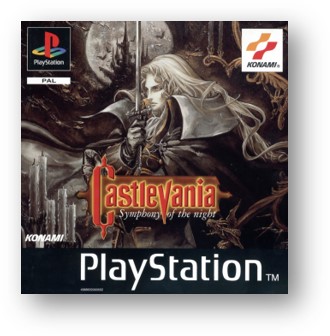 Large interconnected maphttps://abs.twimg.com/emoji/v2/... draggable="false" alt="▪️" title="Schwarzes kleines Quadrat" aria-label="Emoji: Schwarzes kleines Quadrat"> Non-linear path with backtrackinghttps://abs.twimg.com/emoji/v2/... draggable="false" alt="▪️" title="Schwarzes kleines Quadrat" aria-label="Emoji: Schwarzes kleines Quadrat"> A skill/item is required to reach some areas" title="Which is named after 2 games: Metroid and Castlevania Symphony of the Night.They share some main mechanics and design:https://abs.twimg.com/emoji/v2/... draggable="false" alt="▪️" title="Schwarzes kleines Quadrat" aria-label="Emoji: Schwarzes kleines Quadrat"> Large interconnected maphttps://abs.twimg.com/emoji/v2/... draggable="false" alt="▪️" title="Schwarzes kleines Quadrat" aria-label="Emoji: Schwarzes kleines Quadrat"> Non-linear path with backtrackinghttps://abs.twimg.com/emoji/v2/... draggable="false" alt="▪️" title="Schwarzes kleines Quadrat" aria-label="Emoji: Schwarzes kleines Quadrat"> A skill/item is required to reach some areas">
Large interconnected maphttps://abs.twimg.com/emoji/v2/... draggable="false" alt="▪️" title="Schwarzes kleines Quadrat" aria-label="Emoji: Schwarzes kleines Quadrat"> Non-linear path with backtrackinghttps://abs.twimg.com/emoji/v2/... draggable="false" alt="▪️" title="Schwarzes kleines Quadrat" aria-label="Emoji: Schwarzes kleines Quadrat"> A skill/item is required to reach some areas" title="Which is named after 2 games: Metroid and Castlevania Symphony of the Night.They share some main mechanics and design:https://abs.twimg.com/emoji/v2/... draggable="false" alt="▪️" title="Schwarzes kleines Quadrat" aria-label="Emoji: Schwarzes kleines Quadrat"> Large interconnected maphttps://abs.twimg.com/emoji/v2/... draggable="false" alt="▪️" title="Schwarzes kleines Quadrat" aria-label="Emoji: Schwarzes kleines Quadrat"> Non-linear path with backtrackinghttps://abs.twimg.com/emoji/v2/... draggable="false" alt="▪️" title="Schwarzes kleines Quadrat" aria-label="Emoji: Schwarzes kleines Quadrat"> A skill/item is required to reach some areas">
 Large interconnected maphttps://abs.twimg.com/emoji/v2/... draggable="false" alt="▪️" title="Schwarzes kleines Quadrat" aria-label="Emoji: Schwarzes kleines Quadrat"> Non-linear path with backtrackinghttps://abs.twimg.com/emoji/v2/... draggable="false" alt="▪️" title="Schwarzes kleines Quadrat" aria-label="Emoji: Schwarzes kleines Quadrat"> A skill/item is required to reach some areas" title="Which is named after 2 games: Metroid and Castlevania Symphony of the Night.They share some main mechanics and design:https://abs.twimg.com/emoji/v2/... draggable="false" alt="▪️" title="Schwarzes kleines Quadrat" aria-label="Emoji: Schwarzes kleines Quadrat"> Large interconnected maphttps://abs.twimg.com/emoji/v2/... draggable="false" alt="▪️" title="Schwarzes kleines Quadrat" aria-label="Emoji: Schwarzes kleines Quadrat"> Non-linear path with backtrackinghttps://abs.twimg.com/emoji/v2/... draggable="false" alt="▪️" title="Schwarzes kleines Quadrat" aria-label="Emoji: Schwarzes kleines Quadrat"> A skill/item is required to reach some areas">
Large interconnected maphttps://abs.twimg.com/emoji/v2/... draggable="false" alt="▪️" title="Schwarzes kleines Quadrat" aria-label="Emoji: Schwarzes kleines Quadrat"> Non-linear path with backtrackinghttps://abs.twimg.com/emoji/v2/... draggable="false" alt="▪️" title="Schwarzes kleines Quadrat" aria-label="Emoji: Schwarzes kleines Quadrat"> A skill/item is required to reach some areas" title="Which is named after 2 games: Metroid and Castlevania Symphony of the Night.They share some main mechanics and design:https://abs.twimg.com/emoji/v2/... draggable="false" alt="▪️" title="Schwarzes kleines Quadrat" aria-label="Emoji: Schwarzes kleines Quadrat"> Large interconnected maphttps://abs.twimg.com/emoji/v2/... draggable="false" alt="▪️" title="Schwarzes kleines Quadrat" aria-label="Emoji: Schwarzes kleines Quadrat"> Non-linear path with backtrackinghttps://abs.twimg.com/emoji/v2/... draggable="false" alt="▪️" title="Schwarzes kleines Quadrat" aria-label="Emoji: Schwarzes kleines Quadrat"> A skill/item is required to reach some areas">
 There is an ongoing discussion about what can be considered a Metroidvania or not." title="Although the subgenre has evolved, and we can see 3D or not platforming games considered Metroidvanias https://abs.twimg.com/emoji/v2/... draggable="false" alt="👾" title="Außerirdisches Monster" aria-label="Emoji: Außerirdisches Monster">There is an ongoing discussion about what can be considered a Metroidvania or not." class="img-responsive" style="max-width:100%;"/>
There is an ongoing discussion about what can be considered a Metroidvania or not." title="Although the subgenre has evolved, and we can see 3D or not platforming games considered Metroidvanias https://abs.twimg.com/emoji/v2/... draggable="false" alt="👾" title="Außerirdisches Monster" aria-label="Emoji: Außerirdisches Monster">There is an ongoing discussion about what can be considered a Metroidvania or not." class="img-responsive" style="max-width:100%;"/>
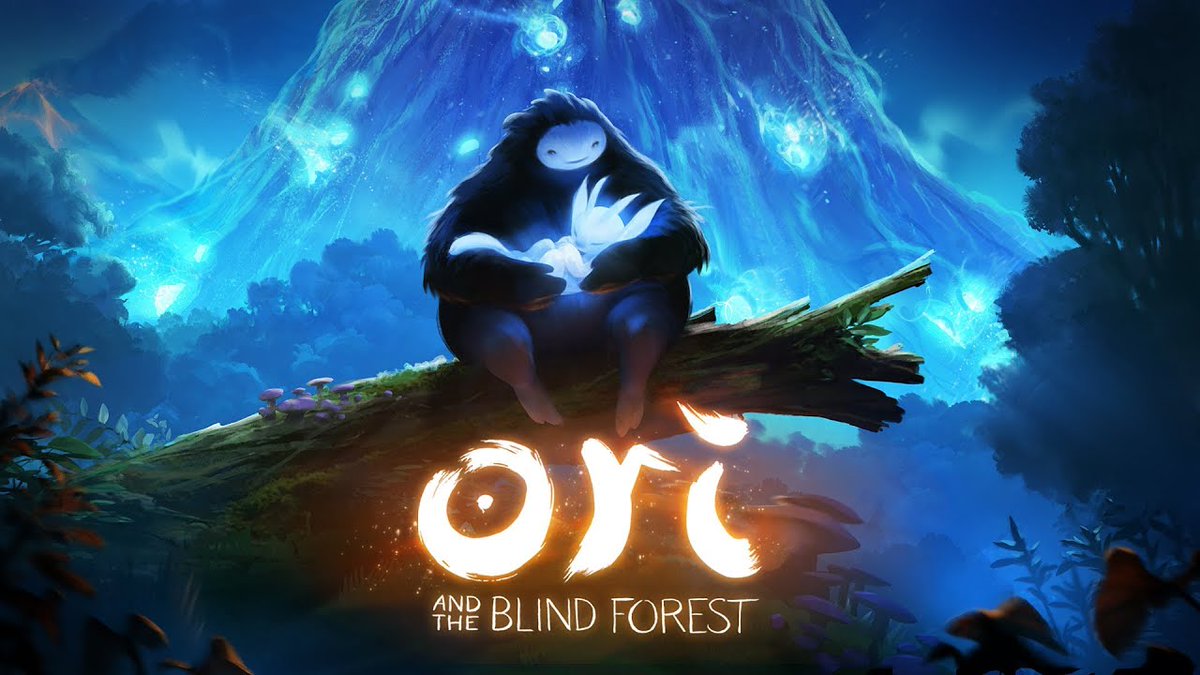 It has an outstanding art and soundtrack.https://abs.twimg.com/emoji/v2/... draggable="false" alt="▪️" title="Schwarzes kleines Quadrat" aria-label="Emoji: Schwarzes kleines Quadrat">The movement of the main character is fluid and smooth.https://abs.twimg.com/emoji/v2/... draggable="false" alt="▪️" title="Schwarzes kleines Quadrat" aria-label="Emoji: Schwarzes kleines Quadrat">Happy ending storyhttps://abs.twimg.com/emoji/v2/... draggable="false" alt="▪️" title="Schwarzes kleines Quadrat" aria-label="Emoji: Schwarzes kleines Quadrat">The game is not too difficult" title="One of Ori’s pillars is “BEAUTY”:https://abs.twimg.com/emoji/v2/... draggable="false" alt="▪️" title="Schwarzes kleines Quadrat" aria-label="Emoji: Schwarzes kleines Quadrat">It has an outstanding art and soundtrack.https://abs.twimg.com/emoji/v2/... draggable="false" alt="▪️" title="Schwarzes kleines Quadrat" aria-label="Emoji: Schwarzes kleines Quadrat">The movement of the main character is fluid and smooth.https://abs.twimg.com/emoji/v2/... draggable="false" alt="▪️" title="Schwarzes kleines Quadrat" aria-label="Emoji: Schwarzes kleines Quadrat">Happy ending storyhttps://abs.twimg.com/emoji/v2/... draggable="false" alt="▪️" title="Schwarzes kleines Quadrat" aria-label="Emoji: Schwarzes kleines Quadrat">The game is not too difficult">
It has an outstanding art and soundtrack.https://abs.twimg.com/emoji/v2/... draggable="false" alt="▪️" title="Schwarzes kleines Quadrat" aria-label="Emoji: Schwarzes kleines Quadrat">The movement of the main character is fluid and smooth.https://abs.twimg.com/emoji/v2/... draggable="false" alt="▪️" title="Schwarzes kleines Quadrat" aria-label="Emoji: Schwarzes kleines Quadrat">Happy ending storyhttps://abs.twimg.com/emoji/v2/... draggable="false" alt="▪️" title="Schwarzes kleines Quadrat" aria-label="Emoji: Schwarzes kleines Quadrat">The game is not too difficult" title="One of Ori’s pillars is “BEAUTY”:https://abs.twimg.com/emoji/v2/... draggable="false" alt="▪️" title="Schwarzes kleines Quadrat" aria-label="Emoji: Schwarzes kleines Quadrat">It has an outstanding art and soundtrack.https://abs.twimg.com/emoji/v2/... draggable="false" alt="▪️" title="Schwarzes kleines Quadrat" aria-label="Emoji: Schwarzes kleines Quadrat">The movement of the main character is fluid and smooth.https://abs.twimg.com/emoji/v2/... draggable="false" alt="▪️" title="Schwarzes kleines Quadrat" aria-label="Emoji: Schwarzes kleines Quadrat">Happy ending storyhttps://abs.twimg.com/emoji/v2/... draggable="false" alt="▪️" title="Schwarzes kleines Quadrat" aria-label="Emoji: Schwarzes kleines Quadrat">The game is not too difficult">
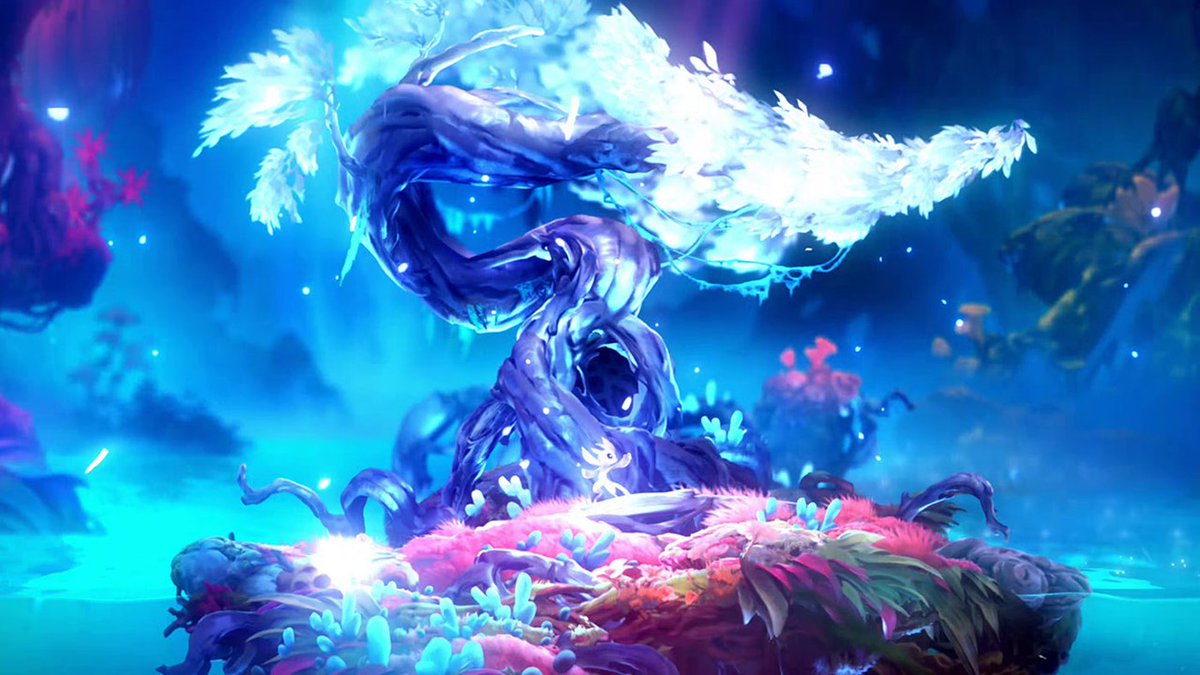 It has an outstanding art and soundtrack.https://abs.twimg.com/emoji/v2/... draggable="false" alt="▪️" title="Schwarzes kleines Quadrat" aria-label="Emoji: Schwarzes kleines Quadrat">The movement of the main character is fluid and smooth.https://abs.twimg.com/emoji/v2/... draggable="false" alt="▪️" title="Schwarzes kleines Quadrat" aria-label="Emoji: Schwarzes kleines Quadrat">Happy ending storyhttps://abs.twimg.com/emoji/v2/... draggable="false" alt="▪️" title="Schwarzes kleines Quadrat" aria-label="Emoji: Schwarzes kleines Quadrat">The game is not too difficult" title="One of Ori’s pillars is “BEAUTY”:https://abs.twimg.com/emoji/v2/... draggable="false" alt="▪️" title="Schwarzes kleines Quadrat" aria-label="Emoji: Schwarzes kleines Quadrat">It has an outstanding art and soundtrack.https://abs.twimg.com/emoji/v2/... draggable="false" alt="▪️" title="Schwarzes kleines Quadrat" aria-label="Emoji: Schwarzes kleines Quadrat">The movement of the main character is fluid and smooth.https://abs.twimg.com/emoji/v2/... draggable="false" alt="▪️" title="Schwarzes kleines Quadrat" aria-label="Emoji: Schwarzes kleines Quadrat">Happy ending storyhttps://abs.twimg.com/emoji/v2/... draggable="false" alt="▪️" title="Schwarzes kleines Quadrat" aria-label="Emoji: Schwarzes kleines Quadrat">The game is not too difficult">
It has an outstanding art and soundtrack.https://abs.twimg.com/emoji/v2/... draggable="false" alt="▪️" title="Schwarzes kleines Quadrat" aria-label="Emoji: Schwarzes kleines Quadrat">The movement of the main character is fluid and smooth.https://abs.twimg.com/emoji/v2/... draggable="false" alt="▪️" title="Schwarzes kleines Quadrat" aria-label="Emoji: Schwarzes kleines Quadrat">Happy ending storyhttps://abs.twimg.com/emoji/v2/... draggable="false" alt="▪️" title="Schwarzes kleines Quadrat" aria-label="Emoji: Schwarzes kleines Quadrat">The game is not too difficult" title="One of Ori’s pillars is “BEAUTY”:https://abs.twimg.com/emoji/v2/... draggable="false" alt="▪️" title="Schwarzes kleines Quadrat" aria-label="Emoji: Schwarzes kleines Quadrat">It has an outstanding art and soundtrack.https://abs.twimg.com/emoji/v2/... draggable="false" alt="▪️" title="Schwarzes kleines Quadrat" aria-label="Emoji: Schwarzes kleines Quadrat">The movement of the main character is fluid and smooth.https://abs.twimg.com/emoji/v2/... draggable="false" alt="▪️" title="Schwarzes kleines Quadrat" aria-label="Emoji: Schwarzes kleines Quadrat">Happy ending storyhttps://abs.twimg.com/emoji/v2/... draggable="false" alt="▪️" title="Schwarzes kleines Quadrat" aria-label="Emoji: Schwarzes kleines Quadrat">The game is not too difficult">
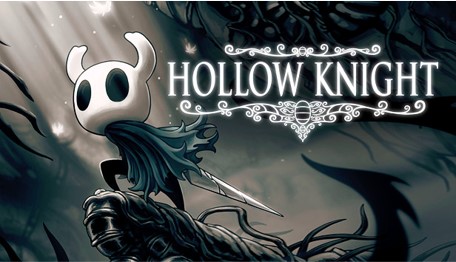 Oppressive and dark environments ahttps://abs.twimg.com/emoji/v2/... draggable="false" alt="▪️" title="Schwarzes kleines Quadrat" aria-label="Emoji: Schwarzes kleines Quadrat"> Sad storyhttps://abs.twimg.com/emoji/v2/... draggable="false" alt="▪️" title="Schwarzes kleines Quadrat" aria-label="Emoji: Schwarzes kleines Quadrat"> The main character movement is not fluidhttps://abs.twimg.com/emoji/v2/... draggable="false" alt="▪️" title="Schwarzes kleines Quadrat" aria-label="Emoji: Schwarzes kleines Quadrat"> The player will have to get skilled to beat all the hazards and strong bossesHowever, the art style is beautiful and cute https://abs.twimg.com/emoji/v2/... draggable="false" alt="☺️" title="Lächelndes Gesicht" aria-label="Emoji: Lächelndes Gesicht">" title="Meanwhile, we could say that Hollow Knight is “UGLY”:https://abs.twimg.com/emoji/v2/... draggable="false" alt="▪️" title="Schwarzes kleines Quadrat" aria-label="Emoji: Schwarzes kleines Quadrat"> Oppressive and dark environments ahttps://abs.twimg.com/emoji/v2/... draggable="false" alt="▪️" title="Schwarzes kleines Quadrat" aria-label="Emoji: Schwarzes kleines Quadrat"> Sad storyhttps://abs.twimg.com/emoji/v2/... draggable="false" alt="▪️" title="Schwarzes kleines Quadrat" aria-label="Emoji: Schwarzes kleines Quadrat"> The main character movement is not fluidhttps://abs.twimg.com/emoji/v2/... draggable="false" alt="▪️" title="Schwarzes kleines Quadrat" aria-label="Emoji: Schwarzes kleines Quadrat"> The player will have to get skilled to beat all the hazards and strong bossesHowever, the art style is beautiful and cute https://abs.twimg.com/emoji/v2/... draggable="false" alt="☺️" title="Lächelndes Gesicht" aria-label="Emoji: Lächelndes Gesicht">">
Oppressive and dark environments ahttps://abs.twimg.com/emoji/v2/... draggable="false" alt="▪️" title="Schwarzes kleines Quadrat" aria-label="Emoji: Schwarzes kleines Quadrat"> Sad storyhttps://abs.twimg.com/emoji/v2/... draggable="false" alt="▪️" title="Schwarzes kleines Quadrat" aria-label="Emoji: Schwarzes kleines Quadrat"> The main character movement is not fluidhttps://abs.twimg.com/emoji/v2/... draggable="false" alt="▪️" title="Schwarzes kleines Quadrat" aria-label="Emoji: Schwarzes kleines Quadrat"> The player will have to get skilled to beat all the hazards and strong bossesHowever, the art style is beautiful and cute https://abs.twimg.com/emoji/v2/... draggable="false" alt="☺️" title="Lächelndes Gesicht" aria-label="Emoji: Lächelndes Gesicht">" title="Meanwhile, we could say that Hollow Knight is “UGLY”:https://abs.twimg.com/emoji/v2/... draggable="false" alt="▪️" title="Schwarzes kleines Quadrat" aria-label="Emoji: Schwarzes kleines Quadrat"> Oppressive and dark environments ahttps://abs.twimg.com/emoji/v2/... draggable="false" alt="▪️" title="Schwarzes kleines Quadrat" aria-label="Emoji: Schwarzes kleines Quadrat"> Sad storyhttps://abs.twimg.com/emoji/v2/... draggable="false" alt="▪️" title="Schwarzes kleines Quadrat" aria-label="Emoji: Schwarzes kleines Quadrat"> The main character movement is not fluidhttps://abs.twimg.com/emoji/v2/... draggable="false" alt="▪️" title="Schwarzes kleines Quadrat" aria-label="Emoji: Schwarzes kleines Quadrat"> The player will have to get skilled to beat all the hazards and strong bossesHowever, the art style is beautiful and cute https://abs.twimg.com/emoji/v2/... draggable="false" alt="☺️" title="Lächelndes Gesicht" aria-label="Emoji: Lächelndes Gesicht">">
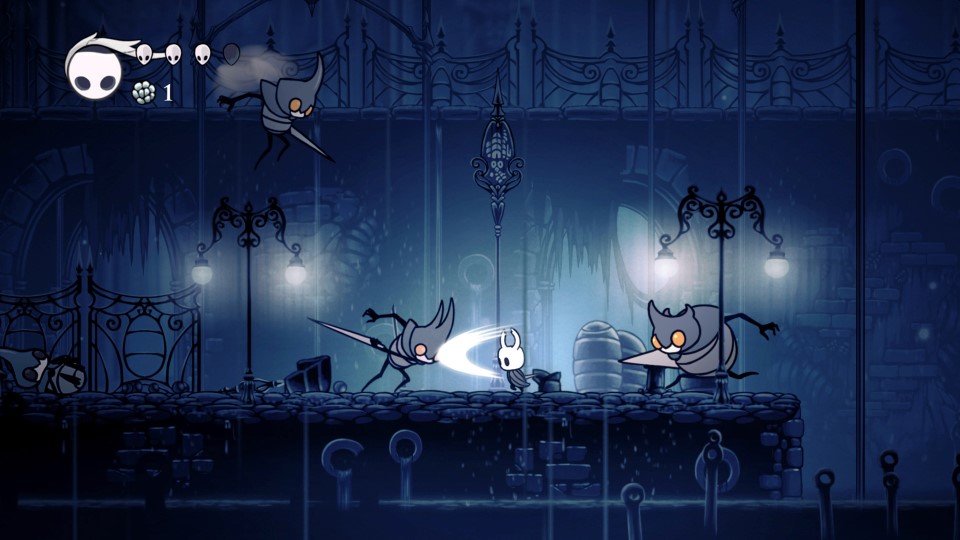 Oppressive and dark environments ahttps://abs.twimg.com/emoji/v2/... draggable="false" alt="▪️" title="Schwarzes kleines Quadrat" aria-label="Emoji: Schwarzes kleines Quadrat"> Sad storyhttps://abs.twimg.com/emoji/v2/... draggable="false" alt="▪️" title="Schwarzes kleines Quadrat" aria-label="Emoji: Schwarzes kleines Quadrat"> The main character movement is not fluidhttps://abs.twimg.com/emoji/v2/... draggable="false" alt="▪️" title="Schwarzes kleines Quadrat" aria-label="Emoji: Schwarzes kleines Quadrat"> The player will have to get skilled to beat all the hazards and strong bossesHowever, the art style is beautiful and cute https://abs.twimg.com/emoji/v2/... draggable="false" alt="☺️" title="Lächelndes Gesicht" aria-label="Emoji: Lächelndes Gesicht">" title="Meanwhile, we could say that Hollow Knight is “UGLY”:https://abs.twimg.com/emoji/v2/... draggable="false" alt="▪️" title="Schwarzes kleines Quadrat" aria-label="Emoji: Schwarzes kleines Quadrat"> Oppressive and dark environments ahttps://abs.twimg.com/emoji/v2/... draggable="false" alt="▪️" title="Schwarzes kleines Quadrat" aria-label="Emoji: Schwarzes kleines Quadrat"> Sad storyhttps://abs.twimg.com/emoji/v2/... draggable="false" alt="▪️" title="Schwarzes kleines Quadrat" aria-label="Emoji: Schwarzes kleines Quadrat"> The main character movement is not fluidhttps://abs.twimg.com/emoji/v2/... draggable="false" alt="▪️" title="Schwarzes kleines Quadrat" aria-label="Emoji: Schwarzes kleines Quadrat"> The player will have to get skilled to beat all the hazards and strong bossesHowever, the art style is beautiful and cute https://abs.twimg.com/emoji/v2/... draggable="false" alt="☺️" title="Lächelndes Gesicht" aria-label="Emoji: Lächelndes Gesicht">">
Oppressive and dark environments ahttps://abs.twimg.com/emoji/v2/... draggable="false" alt="▪️" title="Schwarzes kleines Quadrat" aria-label="Emoji: Schwarzes kleines Quadrat"> Sad storyhttps://abs.twimg.com/emoji/v2/... draggable="false" alt="▪️" title="Schwarzes kleines Quadrat" aria-label="Emoji: Schwarzes kleines Quadrat"> The main character movement is not fluidhttps://abs.twimg.com/emoji/v2/... draggable="false" alt="▪️" title="Schwarzes kleines Quadrat" aria-label="Emoji: Schwarzes kleines Quadrat"> The player will have to get skilled to beat all the hazards and strong bossesHowever, the art style is beautiful and cute https://abs.twimg.com/emoji/v2/... draggable="false" alt="☺️" title="Lächelndes Gesicht" aria-label="Emoji: Lächelndes Gesicht">" title="Meanwhile, we could say that Hollow Knight is “UGLY”:https://abs.twimg.com/emoji/v2/... draggable="false" alt="▪️" title="Schwarzes kleines Quadrat" aria-label="Emoji: Schwarzes kleines Quadrat"> Oppressive and dark environments ahttps://abs.twimg.com/emoji/v2/... draggable="false" alt="▪️" title="Schwarzes kleines Quadrat" aria-label="Emoji: Schwarzes kleines Quadrat"> Sad storyhttps://abs.twimg.com/emoji/v2/... draggable="false" alt="▪️" title="Schwarzes kleines Quadrat" aria-label="Emoji: Schwarzes kleines Quadrat"> The main character movement is not fluidhttps://abs.twimg.com/emoji/v2/... draggable="false" alt="▪️" title="Schwarzes kleines Quadrat" aria-label="Emoji: Schwarzes kleines Quadrat"> The player will have to get skilled to beat all the hazards and strong bossesHowever, the art style is beautiful and cute https://abs.twimg.com/emoji/v2/... draggable="false" alt="☺️" title="Lächelndes Gesicht" aria-label="Emoji: Lächelndes Gesicht">">
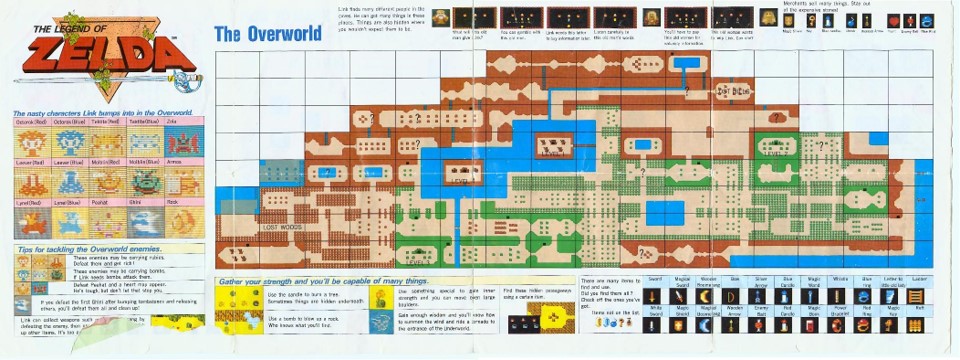 The map is an iconic element in videogames and with such importance that some mechanics have derived from it (fog of war, treasure maps, etc.)" title="https://abs.twimg.com/emoji/v2/... draggable="false" alt="🗺️" title="Weltkarte" aria-label="Emoji: Weltkarte">The map is an iconic element in videogames and with such importance that some mechanics have derived from it (fog of war, treasure maps, etc.)">
The map is an iconic element in videogames and with such importance that some mechanics have derived from it (fog of war, treasure maps, etc.)" title="https://abs.twimg.com/emoji/v2/... draggable="false" alt="🗺️" title="Weltkarte" aria-label="Emoji: Weltkarte">The map is an iconic element in videogames and with such importance that some mechanics have derived from it (fog of war, treasure maps, etc.)">
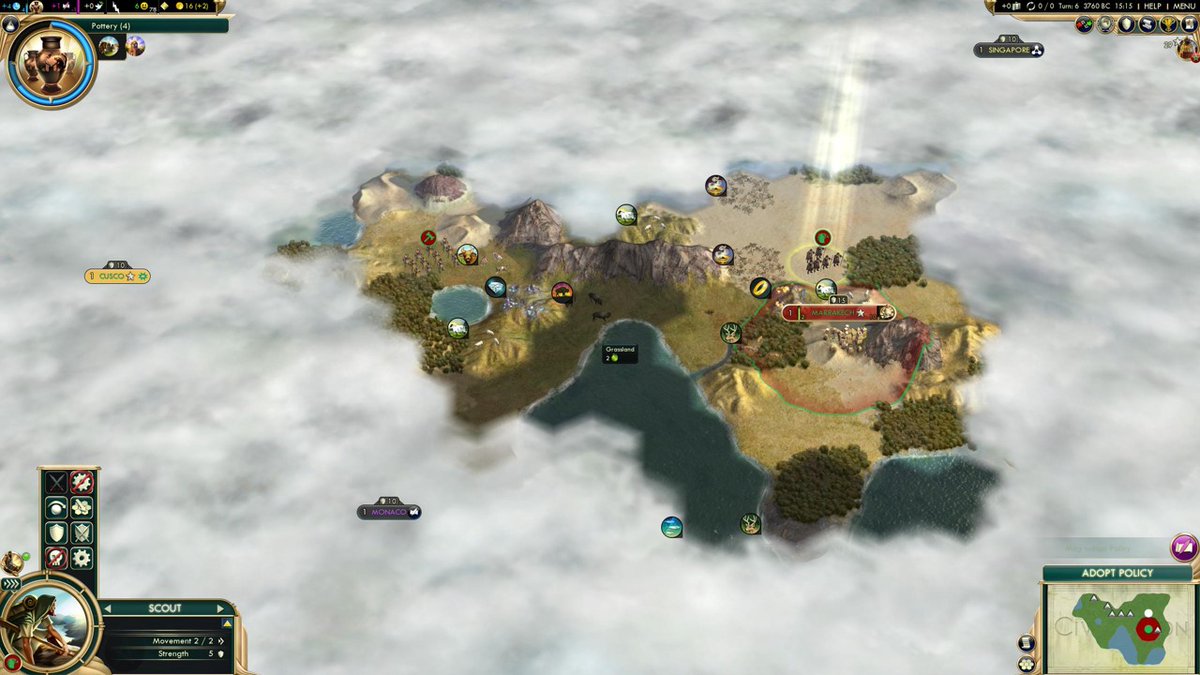 The map is an iconic element in videogames and with such importance that some mechanics have derived from it (fog of war, treasure maps, etc.)" title="https://abs.twimg.com/emoji/v2/... draggable="false" alt="🗺️" title="Weltkarte" aria-label="Emoji: Weltkarte">The map is an iconic element in videogames and with such importance that some mechanics have derived from it (fog of war, treasure maps, etc.)">
The map is an iconic element in videogames and with such importance that some mechanics have derived from it (fog of war, treasure maps, etc.)" title="https://abs.twimg.com/emoji/v2/... draggable="false" alt="🗺️" title="Weltkarte" aria-label="Emoji: Weltkarte">The map is an iconic element in videogames and with such importance that some mechanics have derived from it (fog of war, treasure maps, etc.)">
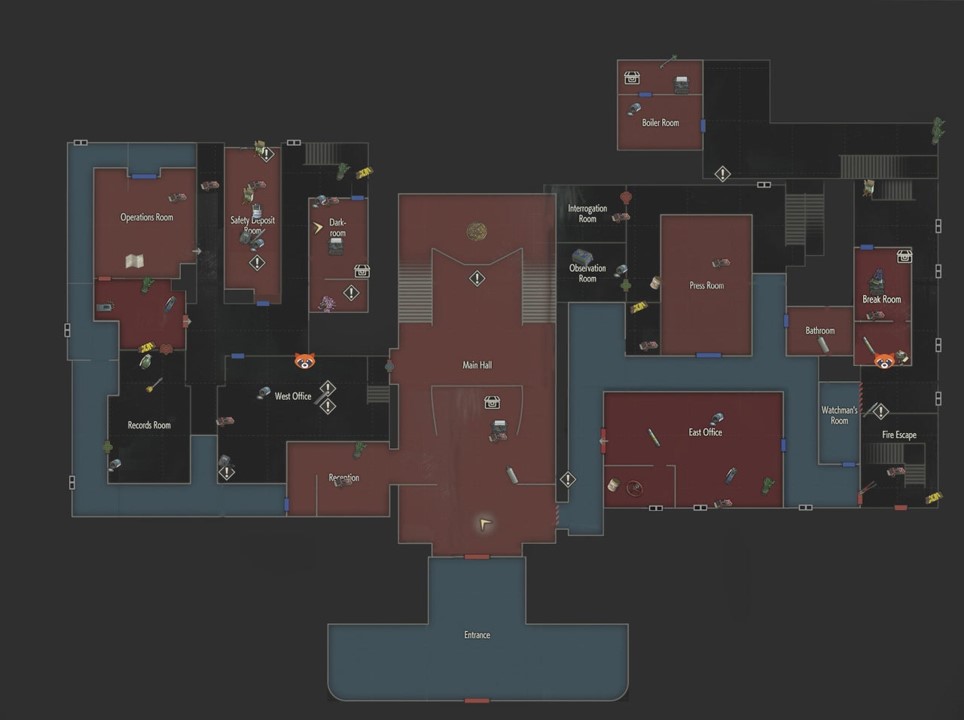 The map is an iconic element in videogames and with such importance that some mechanics have derived from it (fog of war, treasure maps, etc.)" title="https://abs.twimg.com/emoji/v2/... draggable="false" alt="🗺️" title="Weltkarte" aria-label="Emoji: Weltkarte">The map is an iconic element in videogames and with such importance that some mechanics have derived from it (fog of war, treasure maps, etc.)">
The map is an iconic element in videogames and with such importance that some mechanics have derived from it (fog of war, treasure maps, etc.)" title="https://abs.twimg.com/emoji/v2/... draggable="false" alt="🗺️" title="Weltkarte" aria-label="Emoji: Weltkarte">The map is an iconic element in videogames and with such importance that some mechanics have derived from it (fog of war, treasure maps, etc.)">
 The map is an iconic element in videogames and with such importance that some mechanics have derived from it (fog of war, treasure maps, etc.)" title="https://abs.twimg.com/emoji/v2/... draggable="false" alt="🗺️" title="Weltkarte" aria-label="Emoji: Weltkarte">The map is an iconic element in videogames and with such importance that some mechanics have derived from it (fog of war, treasure maps, etc.)">
The map is an iconic element in videogames and with such importance that some mechanics have derived from it (fog of war, treasure maps, etc.)" title="https://abs.twimg.com/emoji/v2/... draggable="false" alt="🗺️" title="Weltkarte" aria-label="Emoji: Weltkarte">The map is an iconic element in videogames and with such importance that some mechanics have derived from it (fog of war, treasure maps, etc.)">

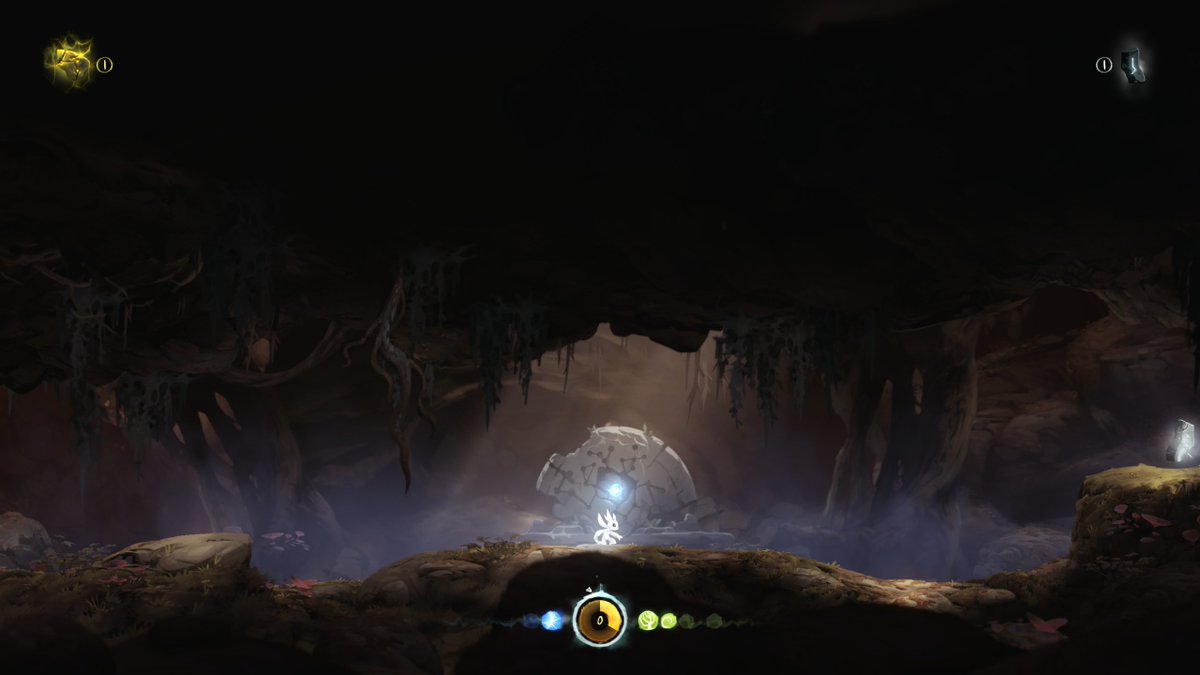

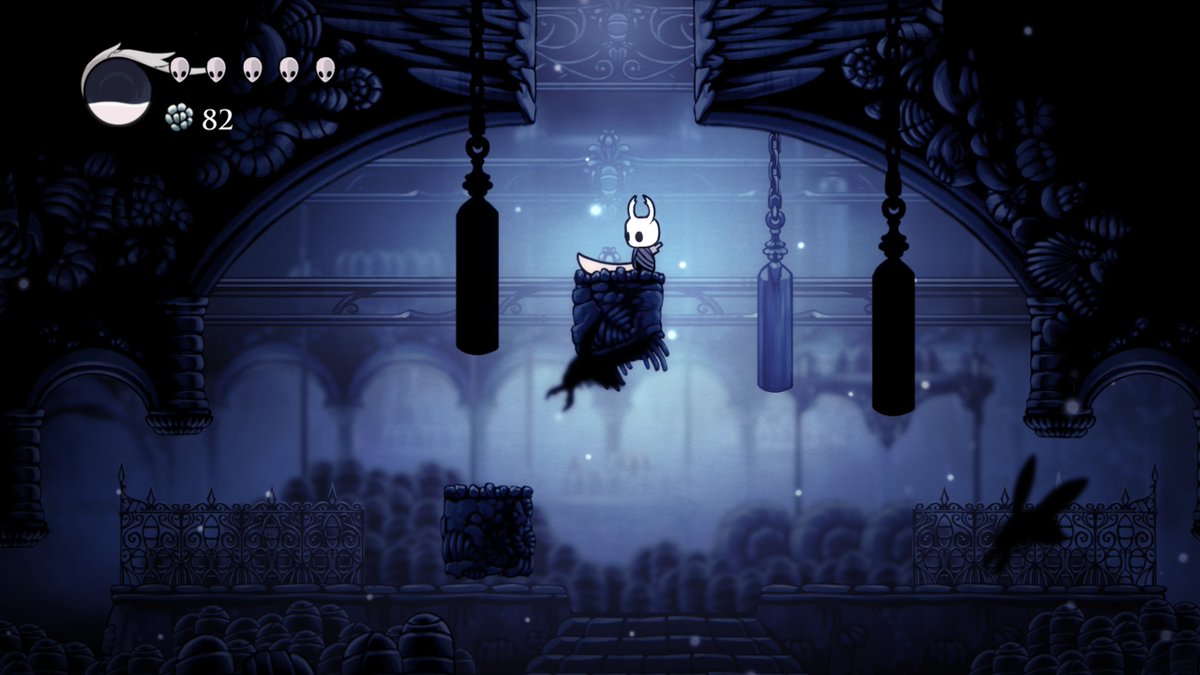 You have some clues on where to find as he makes a characteristic sound and you can spot a trail of paper pieces on the floor." title="In Hollow Knight, you can find Cornifer (an NPC) located in each area that will sell you a map of that area. https://abs.twimg.com/emoji/v2/... draggable="false" alt="🎵" title="Musiknote" aria-label="Emoji: Musiknote">You have some clues on where to find as he makes a characteristic sound and you can spot a trail of paper pieces on the floor.">
You have some clues on where to find as he makes a characteristic sound and you can spot a trail of paper pieces on the floor." title="In Hollow Knight, you can find Cornifer (an NPC) located in each area that will sell you a map of that area. https://abs.twimg.com/emoji/v2/... draggable="false" alt="🎵" title="Musiknote" aria-label="Emoji: Musiknote">You have some clues on where to find as he makes a characteristic sound and you can spot a trail of paper pieces on the floor.">
 You have some clues on where to find as he makes a characteristic sound and you can spot a trail of paper pieces on the floor." title="In Hollow Knight, you can find Cornifer (an NPC) located in each area that will sell you a map of that area. https://abs.twimg.com/emoji/v2/... draggable="false" alt="🎵" title="Musiknote" aria-label="Emoji: Musiknote">You have some clues on where to find as he makes a characteristic sound and you can spot a trail of paper pieces on the floor.">
You have some clues on where to find as he makes a characteristic sound and you can spot a trail of paper pieces on the floor." title="In Hollow Knight, you can find Cornifer (an NPC) located in each area that will sell you a map of that area. https://abs.twimg.com/emoji/v2/... draggable="false" alt="🎵" title="Musiknote" aria-label="Emoji: Musiknote">You have some clues on where to find as he makes a characteristic sound and you can spot a trail of paper pieces on the floor.">
 You have some clues on where to find as he makes a characteristic sound and you can spot a trail of paper pieces on the floor." title="In Hollow Knight, you can find Cornifer (an NPC) located in each area that will sell you a map of that area. https://abs.twimg.com/emoji/v2/... draggable="false" alt="🎵" title="Musiknote" aria-label="Emoji: Musiknote">You have some clues on where to find as he makes a characteristic sound and you can spot a trail of paper pieces on the floor.">
You have some clues on where to find as he makes a characteristic sound and you can spot a trail of paper pieces on the floor." title="In Hollow Knight, you can find Cornifer (an NPC) located in each area that will sell you a map of that area. https://abs.twimg.com/emoji/v2/... draggable="false" alt="🎵" title="Musiknote" aria-label="Emoji: Musiknote">You have some clues on where to find as he makes a characteristic sound and you can spot a trail of paper pieces on the floor.">
 You have some clues on where to find as he makes a characteristic sound and you can spot a trail of paper pieces on the floor." title="In Hollow Knight, you can find Cornifer (an NPC) located in each area that will sell you a map of that area. https://abs.twimg.com/emoji/v2/... draggable="false" alt="🎵" title="Musiknote" aria-label="Emoji: Musiknote">You have some clues on where to find as he makes a characteristic sound and you can spot a trail of paper pieces on the floor.">
You have some clues on where to find as he makes a characteristic sound and you can spot a trail of paper pieces on the floor." title="In Hollow Knight, you can find Cornifer (an NPC) located in each area that will sell you a map of that area. https://abs.twimg.com/emoji/v2/... draggable="false" alt="🎵" title="Musiknote" aria-label="Emoji: Musiknote">You have some clues on where to find as he makes a characteristic sound and you can spot a trail of paper pieces on the floor.">
 We can notice that the number of NPCs from Ori 1 to Ori 2 was highly increased since they wanted to provide a world that feels “alive”." title="So, what did they do for Ori 2? As for HK, there is an NPC called Lupo that sells maps located in each area. https://abs.twimg.com/emoji/v2/... draggable="false" alt="🧑🤝🧑" title="Leute halten Händchen" aria-label="Emoji: Leute halten Händchen">We can notice that the number of NPCs from Ori 1 to Ori 2 was highly increased since they wanted to provide a world that feels “alive”." class="img-responsive" style="max-width:100%;"/>
We can notice that the number of NPCs from Ori 1 to Ori 2 was highly increased since they wanted to provide a world that feels “alive”." title="So, what did they do for Ori 2? As for HK, there is an NPC called Lupo that sells maps located in each area. https://abs.twimg.com/emoji/v2/... draggable="false" alt="🧑🤝🧑" title="Leute halten Händchen" aria-label="Emoji: Leute halten Händchen">We can notice that the number of NPCs from Ori 1 to Ori 2 was highly increased since they wanted to provide a world that feels “alive”." class="img-responsive" style="max-width:100%;"/>
 HK doesn’t show the map of an area if you haven’t bought the map, even if you have already been there.https://abs.twimg.com/emoji/v2/... draggable="false" alt="🔵" title="Blauer Kreis" aria-label="Emoji: Blauer Kreis">Ori will reveal the paths where you’ve already been instantly." title="However, as I said before, they had to adapt the map revealing mechanics to their needs:https://abs.twimg.com/emoji/v2/... draggable="false" alt="⚫️" title="Schwarzer Kreis" aria-label="Emoji: Schwarzer Kreis">HK doesn’t show the map of an area if you haven’t bought the map, even if you have already been there.https://abs.twimg.com/emoji/v2/... draggable="false" alt="🔵" title="Blauer Kreis" aria-label="Emoji: Blauer Kreis">Ori will reveal the paths where you’ve already been instantly.">
HK doesn’t show the map of an area if you haven’t bought the map, even if you have already been there.https://abs.twimg.com/emoji/v2/... draggable="false" alt="🔵" title="Blauer Kreis" aria-label="Emoji: Blauer Kreis">Ori will reveal the paths where you’ve already been instantly." title="However, as I said before, they had to adapt the map revealing mechanics to their needs:https://abs.twimg.com/emoji/v2/... draggable="false" alt="⚫️" title="Schwarzer Kreis" aria-label="Emoji: Schwarzer Kreis">HK doesn’t show the map of an area if you haven’t bought the map, even if you have already been there.https://abs.twimg.com/emoji/v2/... draggable="false" alt="🔵" title="Blauer Kreis" aria-label="Emoji: Blauer Kreis">Ori will reveal the paths where you’ve already been instantly.">
 HK doesn’t show the map of an area if you haven’t bought the map, even if you have already been there.https://abs.twimg.com/emoji/v2/... draggable="false" alt="🔵" title="Blauer Kreis" aria-label="Emoji: Blauer Kreis">Ori will reveal the paths where you’ve already been instantly." title="However, as I said before, they had to adapt the map revealing mechanics to their needs:https://abs.twimg.com/emoji/v2/... draggable="false" alt="⚫️" title="Schwarzer Kreis" aria-label="Emoji: Schwarzer Kreis">HK doesn’t show the map of an area if you haven’t bought the map, even if you have already been there.https://abs.twimg.com/emoji/v2/... draggable="false" alt="🔵" title="Blauer Kreis" aria-label="Emoji: Blauer Kreis">Ori will reveal the paths where you’ve already been instantly.">
HK doesn’t show the map of an area if you haven’t bought the map, even if you have already been there.https://abs.twimg.com/emoji/v2/... draggable="false" alt="🔵" title="Blauer Kreis" aria-label="Emoji: Blauer Kreis">Ori will reveal the paths where you’ve already been instantly." title="However, as I said before, they had to adapt the map revealing mechanics to their needs:https://abs.twimg.com/emoji/v2/... draggable="false" alt="⚫️" title="Schwarzer Kreis" aria-label="Emoji: Schwarzer Kreis">HK doesn’t show the map of an area if you haven’t bought the map, even if you have already been there.https://abs.twimg.com/emoji/v2/... draggable="false" alt="🔵" title="Blauer Kreis" aria-label="Emoji: Blauer Kreis">Ori will reveal the paths where you’ve already been instantly.">
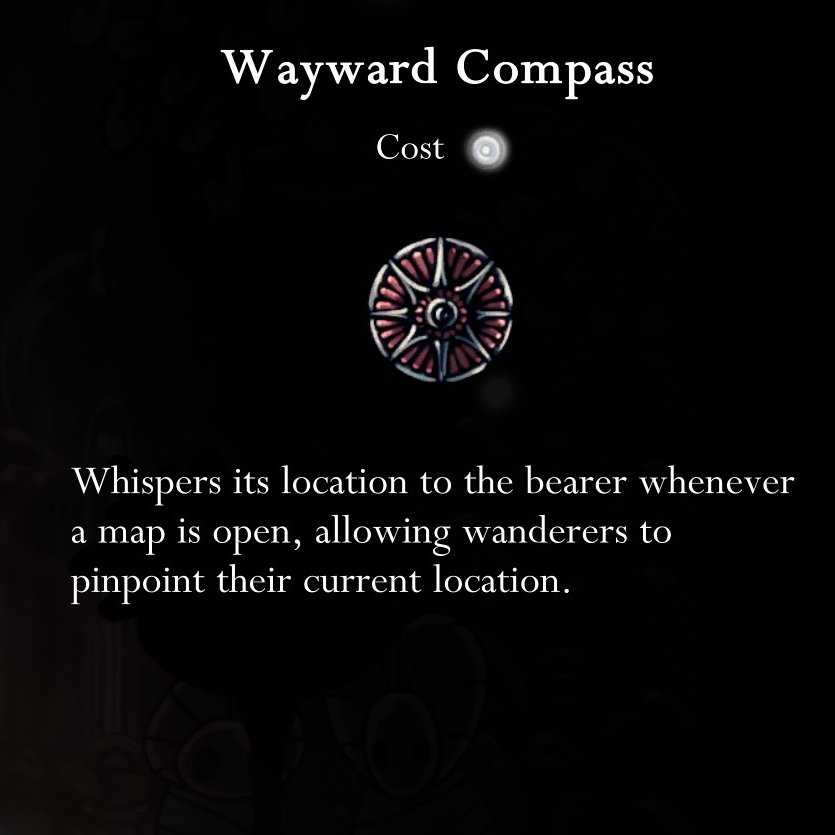 HK will not show an icon on the map to display where you are currently. Unless you have equipped a special item.https://abs.twimg.com/emoji/v2/... draggable="false" alt="🔵" title="Blauer Kreis" aria-label="Emoji: Blauer Kreis">Ori will show your location without any special requirement." title="https://abs.twimg.com/emoji/v2/... draggable="false" alt="⚫️" title="Schwarzer Kreis" aria-label="Emoji: Schwarzer Kreis">HK will not show an icon on the map to display where you are currently. Unless you have equipped a special item.https://abs.twimg.com/emoji/v2/... draggable="false" alt="🔵" title="Blauer Kreis" aria-label="Emoji: Blauer Kreis">Ori will show your location without any special requirement." class="img-responsive" style="max-width:100%;"/>
HK will not show an icon on the map to display where you are currently. Unless you have equipped a special item.https://abs.twimg.com/emoji/v2/... draggable="false" alt="🔵" title="Blauer Kreis" aria-label="Emoji: Blauer Kreis">Ori will show your location without any special requirement." title="https://abs.twimg.com/emoji/v2/... draggable="false" alt="⚫️" title="Schwarzer Kreis" aria-label="Emoji: Schwarzer Kreis">HK will not show an icon on the map to display where you are currently. Unless you have equipped a special item.https://abs.twimg.com/emoji/v2/... draggable="false" alt="🔵" title="Blauer Kreis" aria-label="Emoji: Blauer Kreis">Ori will show your location without any special requirement." class="img-responsive" style="max-width:100%;"/>
 When you buy a map in HK you don’t get the full map, you get some clues, and only part of it, you will need to explore the rest yourself. https://abs.twimg.com/emoji/v2/... draggable="false" alt="🔵" title="Blauer Kreis" aria-label="Emoji: Blauer Kreis">In Ori, once you buy the map you get the whole map for that area revealed." title="https://abs.twimg.com/emoji/v2/... draggable="false" alt="⚫️" title="Schwarzer Kreis" aria-label="Emoji: Schwarzer Kreis">When you buy a map in HK you don’t get the full map, you get some clues, and only part of it, you will need to explore the rest yourself. https://abs.twimg.com/emoji/v2/... draggable="false" alt="🔵" title="Blauer Kreis" aria-label="Emoji: Blauer Kreis">In Ori, once you buy the map you get the whole map for that area revealed.">
When you buy a map in HK you don’t get the full map, you get some clues, and only part of it, you will need to explore the rest yourself. https://abs.twimg.com/emoji/v2/... draggable="false" alt="🔵" title="Blauer Kreis" aria-label="Emoji: Blauer Kreis">In Ori, once you buy the map you get the whole map for that area revealed." title="https://abs.twimg.com/emoji/v2/... draggable="false" alt="⚫️" title="Schwarzer Kreis" aria-label="Emoji: Schwarzer Kreis">When you buy a map in HK you don’t get the full map, you get some clues, and only part of it, you will need to explore the rest yourself. https://abs.twimg.com/emoji/v2/... draggable="false" alt="🔵" title="Blauer Kreis" aria-label="Emoji: Blauer Kreis">In Ori, once you buy the map you get the whole map for that area revealed.">
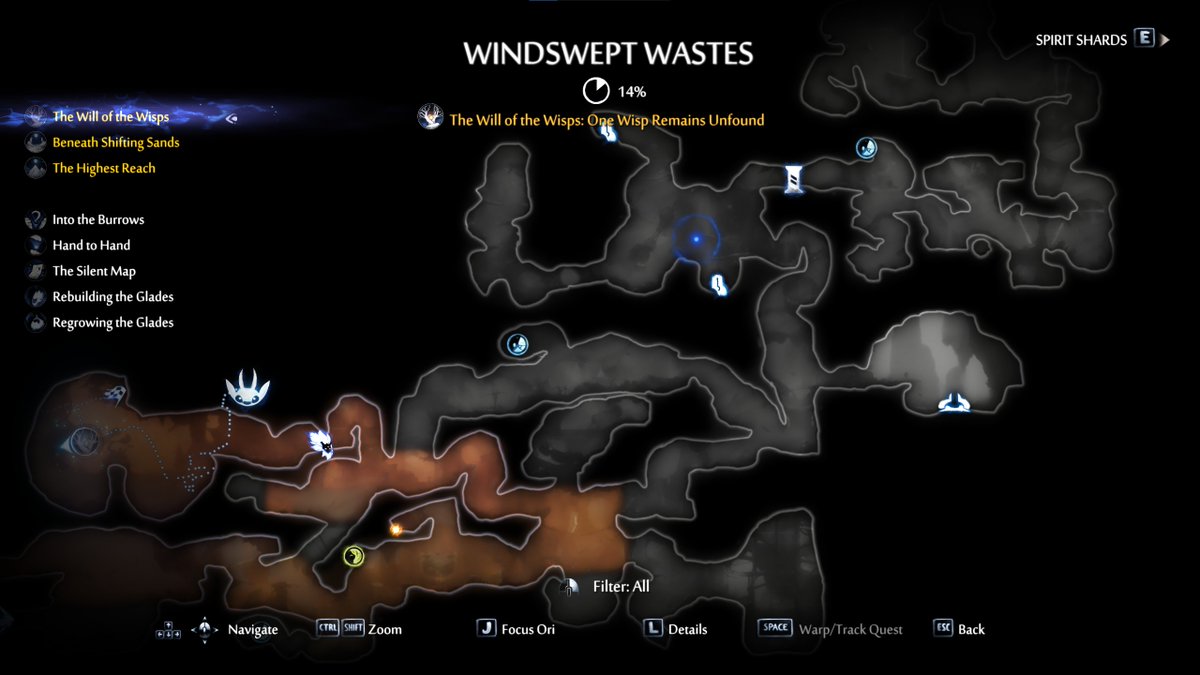 When you buy a map in HK you don’t get the full map, you get some clues, and only part of it, you will need to explore the rest yourself. https://abs.twimg.com/emoji/v2/... draggable="false" alt="🔵" title="Blauer Kreis" aria-label="Emoji: Blauer Kreis">In Ori, once you buy the map you get the whole map for that area revealed." title="https://abs.twimg.com/emoji/v2/... draggable="false" alt="⚫️" title="Schwarzer Kreis" aria-label="Emoji: Schwarzer Kreis">When you buy a map in HK you don’t get the full map, you get some clues, and only part of it, you will need to explore the rest yourself. https://abs.twimg.com/emoji/v2/... draggable="false" alt="🔵" title="Blauer Kreis" aria-label="Emoji: Blauer Kreis">In Ori, once you buy the map you get the whole map for that area revealed.">
When you buy a map in HK you don’t get the full map, you get some clues, and only part of it, you will need to explore the rest yourself. https://abs.twimg.com/emoji/v2/... draggable="false" alt="🔵" title="Blauer Kreis" aria-label="Emoji: Blauer Kreis">In Ori, once you buy the map you get the whole map for that area revealed." title="https://abs.twimg.com/emoji/v2/... draggable="false" alt="⚫️" title="Schwarzer Kreis" aria-label="Emoji: Schwarzer Kreis">When you buy a map in HK you don’t get the full map, you get some clues, and only part of it, you will need to explore the rest yourself. https://abs.twimg.com/emoji/v2/... draggable="false" alt="🔵" title="Blauer Kreis" aria-label="Emoji: Blauer Kreis">In Ori, once you buy the map you get the whole map for that area revealed.">
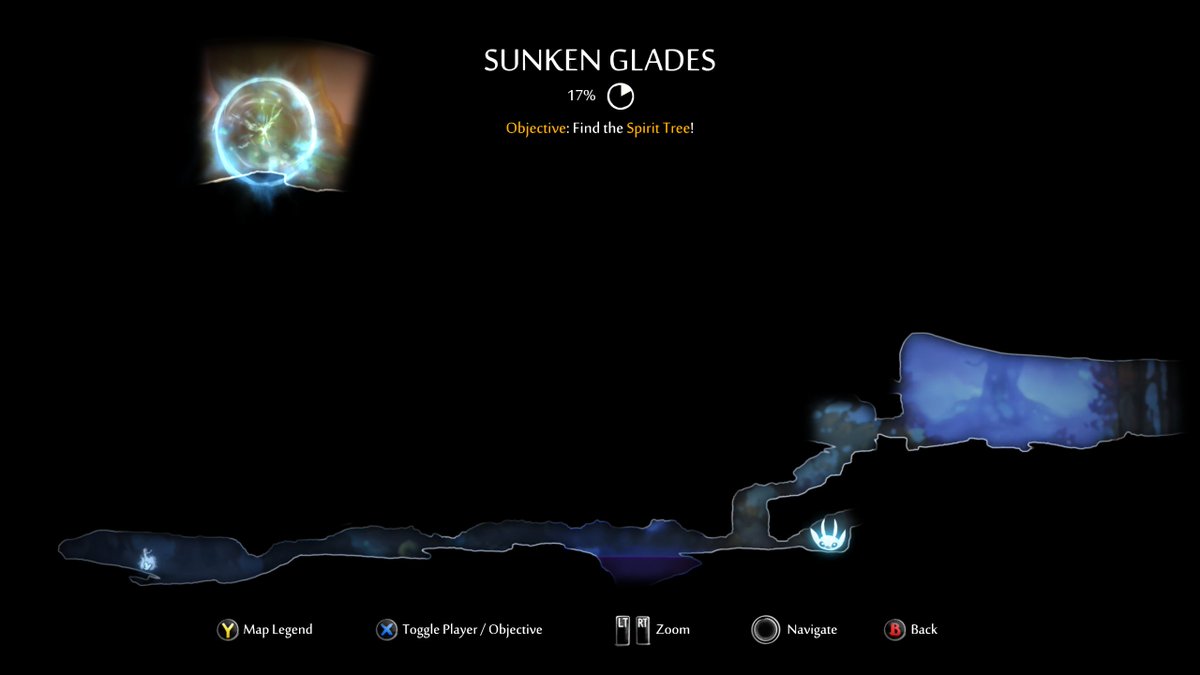 In Ori 1 the room/area where the next objective is located was revealed. https://abs.twimg.com/emoji/v2/... draggable="false" alt="🔵" title="Blauer Kreis" aria-label="Emoji: Blauer Kreis">https://abs.twimg.com/emoji/v2/... draggable="false" alt="⚫️" title="Schwarzer Kreis" aria-label="Emoji: Schwarzer Kreis">Ori 2 went for the same approach as HK; showing an icon in the map where the objective is, without revealing the whole room/area in the map." title="But on objective marking both have the same approach:https://abs.twimg.com/emoji/v2/... draggable="false" alt="🟠" title="Orangefarbener Kreis" aria-label="Emoji: Orangefarbener Kreis">In Ori 1 the room/area where the next objective is located was revealed. https://abs.twimg.com/emoji/v2/... draggable="false" alt="🔵" title="Blauer Kreis" aria-label="Emoji: Blauer Kreis">https://abs.twimg.com/emoji/v2/... draggable="false" alt="⚫️" title="Schwarzer Kreis" aria-label="Emoji: Schwarzer Kreis">Ori 2 went for the same approach as HK; showing an icon in the map where the objective is, without revealing the whole room/area in the map.">
In Ori 1 the room/area where the next objective is located was revealed. https://abs.twimg.com/emoji/v2/... draggable="false" alt="🔵" title="Blauer Kreis" aria-label="Emoji: Blauer Kreis">https://abs.twimg.com/emoji/v2/... draggable="false" alt="⚫️" title="Schwarzer Kreis" aria-label="Emoji: Schwarzer Kreis">Ori 2 went for the same approach as HK; showing an icon in the map where the objective is, without revealing the whole room/area in the map." title="But on objective marking both have the same approach:https://abs.twimg.com/emoji/v2/... draggable="false" alt="🟠" title="Orangefarbener Kreis" aria-label="Emoji: Orangefarbener Kreis">In Ori 1 the room/area where the next objective is located was revealed. https://abs.twimg.com/emoji/v2/... draggable="false" alt="🔵" title="Blauer Kreis" aria-label="Emoji: Blauer Kreis">https://abs.twimg.com/emoji/v2/... draggable="false" alt="⚫️" title="Schwarzer Kreis" aria-label="Emoji: Schwarzer Kreis">Ori 2 went for the same approach as HK; showing an icon in the map where the objective is, without revealing the whole room/area in the map.">
 In Ori 1 the room/area where the next objective is located was revealed. https://abs.twimg.com/emoji/v2/... draggable="false" alt="🔵" title="Blauer Kreis" aria-label="Emoji: Blauer Kreis">https://abs.twimg.com/emoji/v2/... draggable="false" alt="⚫️" title="Schwarzer Kreis" aria-label="Emoji: Schwarzer Kreis">Ori 2 went for the same approach as HK; showing an icon in the map where the objective is, without revealing the whole room/area in the map." title="But on objective marking both have the same approach:https://abs.twimg.com/emoji/v2/... draggable="false" alt="🟠" title="Orangefarbener Kreis" aria-label="Emoji: Orangefarbener Kreis">In Ori 1 the room/area where the next objective is located was revealed. https://abs.twimg.com/emoji/v2/... draggable="false" alt="🔵" title="Blauer Kreis" aria-label="Emoji: Blauer Kreis">https://abs.twimg.com/emoji/v2/... draggable="false" alt="⚫️" title="Schwarzer Kreis" aria-label="Emoji: Schwarzer Kreis">Ori 2 went for the same approach as HK; showing an icon in the map where the objective is, without revealing the whole room/area in the map.">
In Ori 1 the room/area where the next objective is located was revealed. https://abs.twimg.com/emoji/v2/... draggable="false" alt="🔵" title="Blauer Kreis" aria-label="Emoji: Blauer Kreis">https://abs.twimg.com/emoji/v2/... draggable="false" alt="⚫️" title="Schwarzer Kreis" aria-label="Emoji: Schwarzer Kreis">Ori 2 went for the same approach as HK; showing an icon in the map where the objective is, without revealing the whole room/area in the map." title="But on objective marking both have the same approach:https://abs.twimg.com/emoji/v2/... draggable="false" alt="🟠" title="Orangefarbener Kreis" aria-label="Emoji: Orangefarbener Kreis">In Ori 1 the room/area where the next objective is located was revealed. https://abs.twimg.com/emoji/v2/... draggable="false" alt="🔵" title="Blauer Kreis" aria-label="Emoji: Blauer Kreis">https://abs.twimg.com/emoji/v2/... draggable="false" alt="⚫️" title="Schwarzer Kreis" aria-label="Emoji: Schwarzer Kreis">Ori 2 went for the same approach as HK; showing an icon in the map where the objective is, without revealing the whole room/area in the map.">
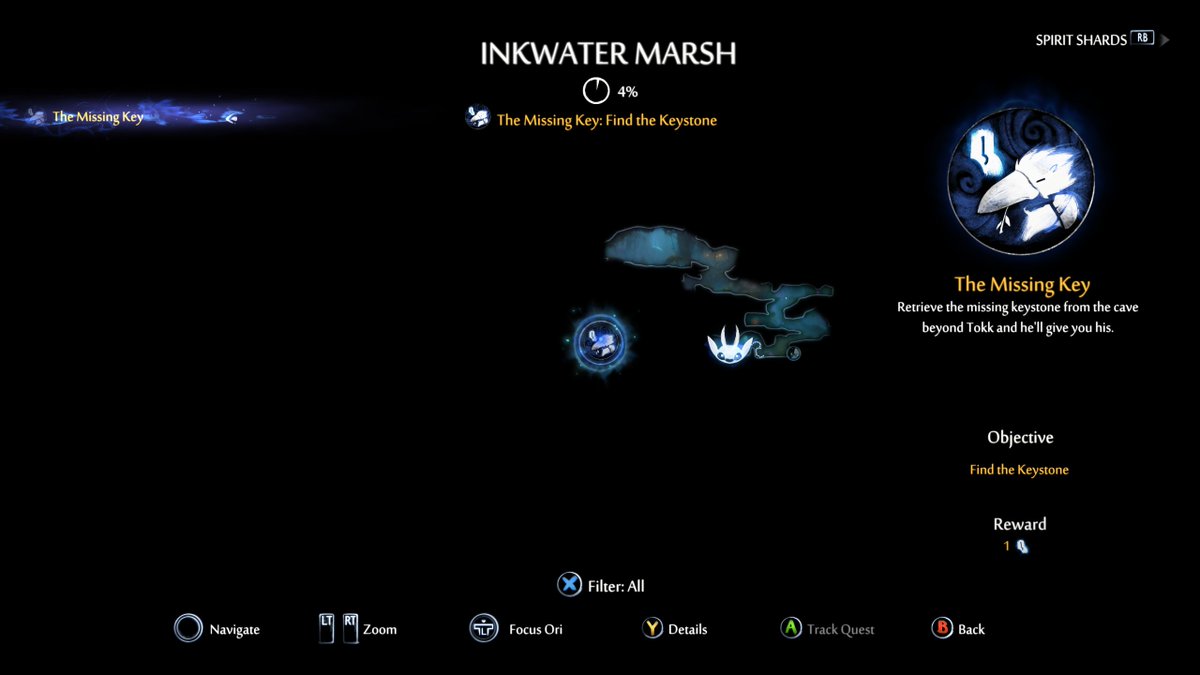 In Ori 1 the room/area where the next objective is located was revealed. https://abs.twimg.com/emoji/v2/... draggable="false" alt="🔵" title="Blauer Kreis" aria-label="Emoji: Blauer Kreis">https://abs.twimg.com/emoji/v2/... draggable="false" alt="⚫️" title="Schwarzer Kreis" aria-label="Emoji: Schwarzer Kreis">Ori 2 went for the same approach as HK; showing an icon in the map where the objective is, without revealing the whole room/area in the map." title="But on objective marking both have the same approach:https://abs.twimg.com/emoji/v2/... draggable="false" alt="🟠" title="Orangefarbener Kreis" aria-label="Emoji: Orangefarbener Kreis">In Ori 1 the room/area where the next objective is located was revealed. https://abs.twimg.com/emoji/v2/... draggable="false" alt="🔵" title="Blauer Kreis" aria-label="Emoji: Blauer Kreis">https://abs.twimg.com/emoji/v2/... draggable="false" alt="⚫️" title="Schwarzer Kreis" aria-label="Emoji: Schwarzer Kreis">Ori 2 went for the same approach as HK; showing an icon in the map where the objective is, without revealing the whole room/area in the map.">
In Ori 1 the room/area where the next objective is located was revealed. https://abs.twimg.com/emoji/v2/... draggable="false" alt="🔵" title="Blauer Kreis" aria-label="Emoji: Blauer Kreis">https://abs.twimg.com/emoji/v2/... draggable="false" alt="⚫️" title="Schwarzer Kreis" aria-label="Emoji: Schwarzer Kreis">Ori 2 went for the same approach as HK; showing an icon in the map where the objective is, without revealing the whole room/area in the map." title="But on objective marking both have the same approach:https://abs.twimg.com/emoji/v2/... draggable="false" alt="🟠" title="Orangefarbener Kreis" aria-label="Emoji: Orangefarbener Kreis">In Ori 1 the room/area where the next objective is located was revealed. https://abs.twimg.com/emoji/v2/... draggable="false" alt="🔵" title="Blauer Kreis" aria-label="Emoji: Blauer Kreis">https://abs.twimg.com/emoji/v2/... draggable="false" alt="⚫️" title="Schwarzer Kreis" aria-label="Emoji: Schwarzer Kreis">Ori 2 went for the same approach as HK; showing an icon in the map where the objective is, without revealing the whole room/area in the map.">
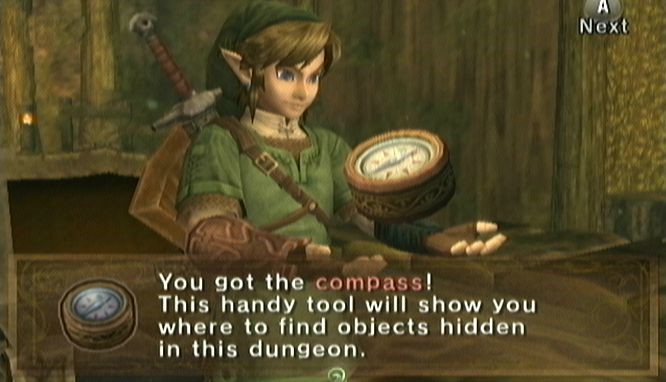 " title="With this technique you are encouraging exploration, the player has an idea of what direction to follow but doesn’t know for sure what road will lead to the objective.It is like having a compass https://abs.twimg.com/emoji/v2/... draggable="false" alt="🧭" title="Compass" aria-label="Emoji: Compass">" class="img-responsive" style="max-width:100%;"/>
" title="With this technique you are encouraging exploration, the player has an idea of what direction to follow but doesn’t know for sure what road will lead to the objective.It is like having a compass https://abs.twimg.com/emoji/v2/... draggable="false" alt="🧭" title="Compass" aria-label="Emoji: Compass">" class="img-responsive" style="max-width:100%;"/>
 We& #39;ve said that one of the objectives of Ori 2 was making the world feel more “alive” so not only they populated the game with a lot of NPCs, but they added a town that acts as CENTRAL HUB called Well Spring Glades." title="https://abs.twimg.com/emoji/v2/... draggable="false" alt="🏘️" title="Häuser" aria-label="Emoji: Häuser">We& #39;ve said that one of the objectives of Ori 2 was making the world feel more “alive” so not only they populated the game with a lot of NPCs, but they added a town that acts as CENTRAL HUB called Well Spring Glades." class="img-responsive" style="max-width:100%;"/>
We& #39;ve said that one of the objectives of Ori 2 was making the world feel more “alive” so not only they populated the game with a lot of NPCs, but they added a town that acts as CENTRAL HUB called Well Spring Glades." title="https://abs.twimg.com/emoji/v2/... draggable="false" alt="🏘️" title="Häuser" aria-label="Emoji: Häuser">We& #39;ve said that one of the objectives of Ori 2 was making the world feel more “alive” so not only they populated the game with a lot of NPCs, but they added a town that acts as CENTRAL HUB called Well Spring Glades." class="img-responsive" style="max-width:100%;"/>
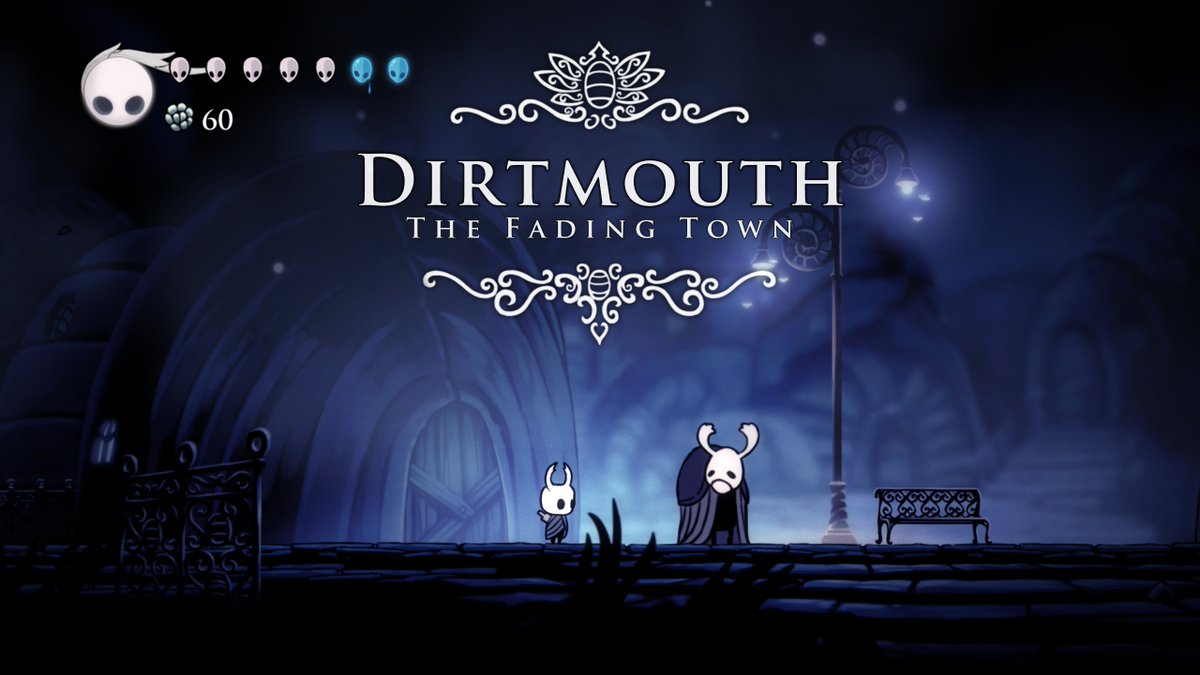
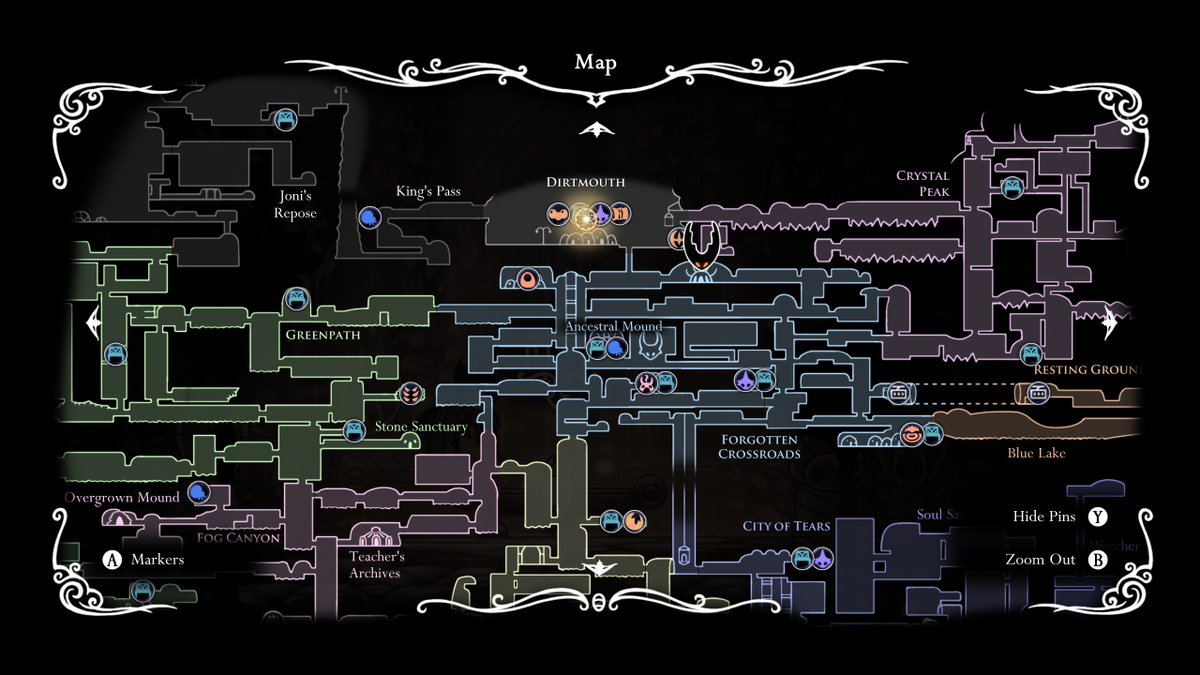
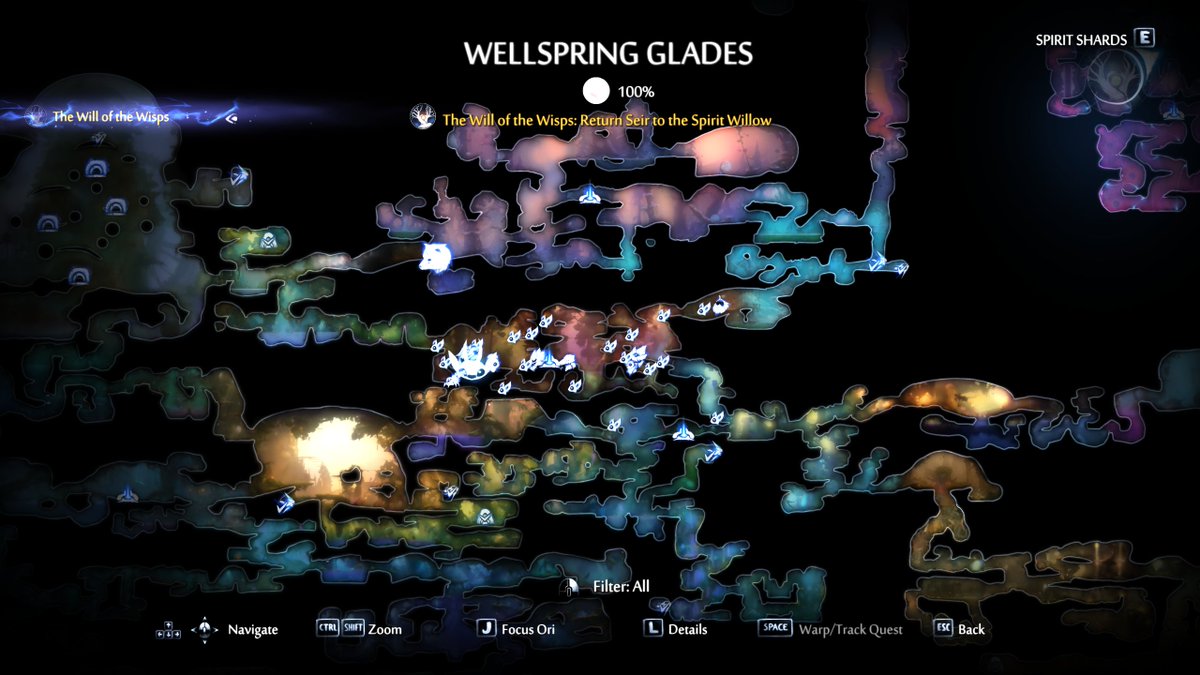

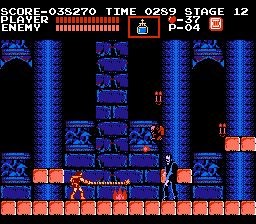
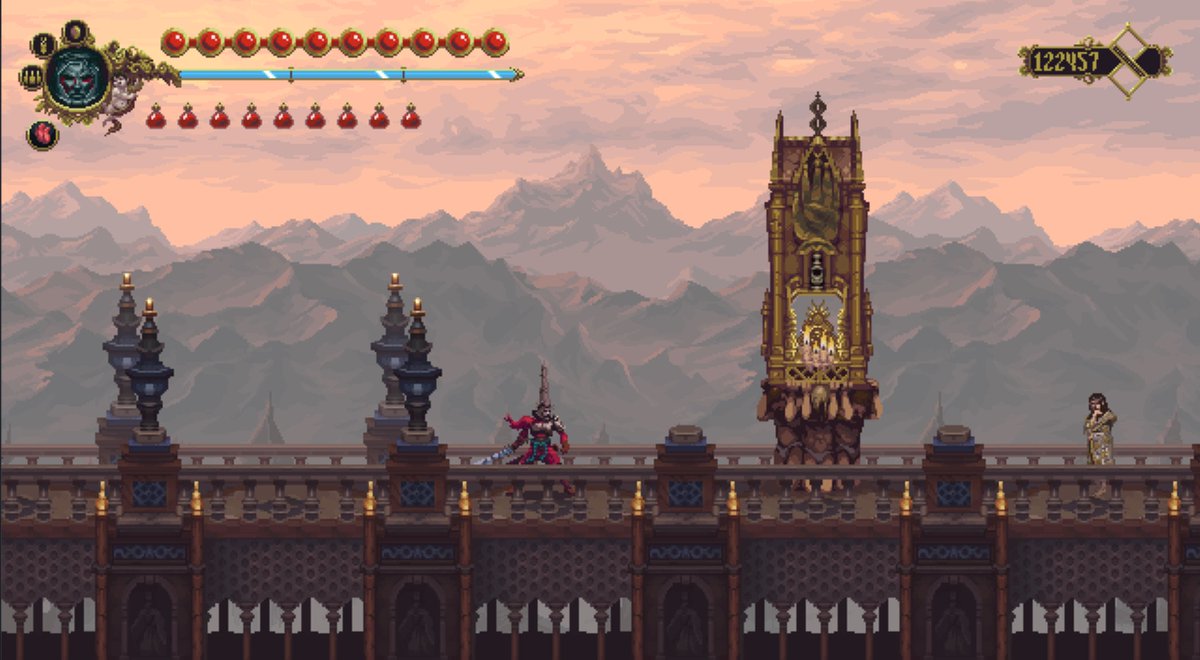
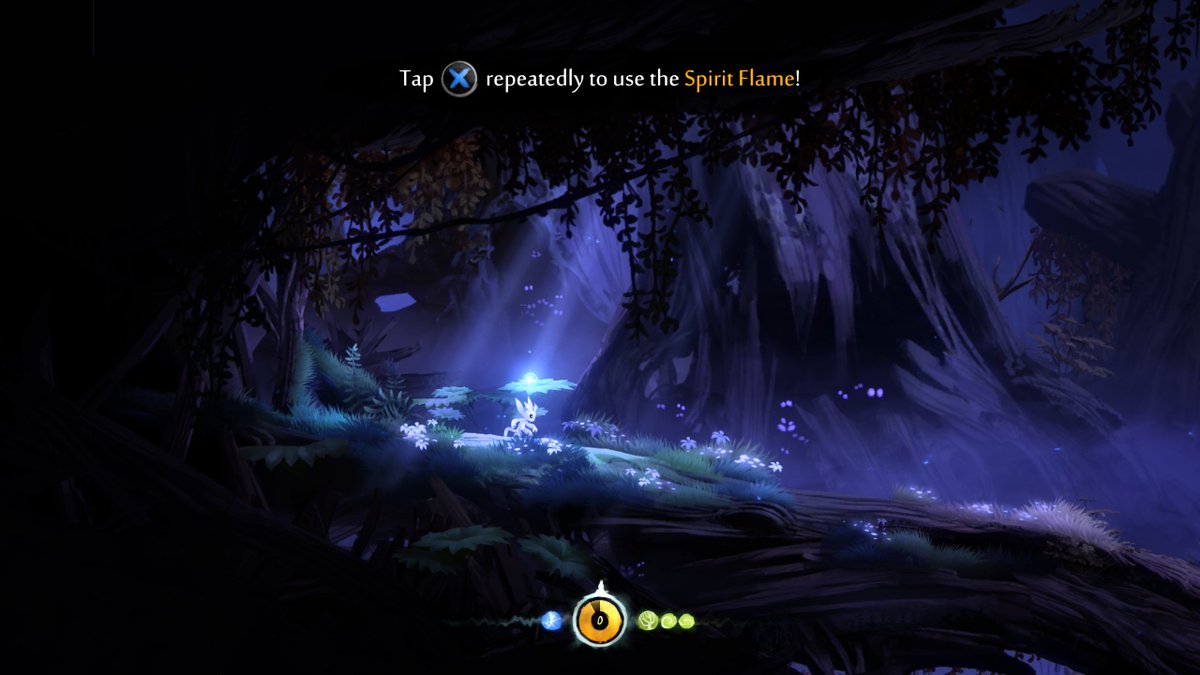 In Ori 1 the player had the Spirit Flame, a small orb that goes next to enemies and attacks them on a button press.https://abs.twimg.com/emoji/v2/... draggable="false" alt="⚫️" title="Schwarzer Kreis" aria-label="Emoji: Schwarzer Kreis">Hollow Knight’s main weapon is the nail (sword).https://abs.twimg.com/emoji/v2/... draggable="false" alt="🔵" title="Blauer Kreis" aria-label="Emoji: Blauer Kreis">Similar to HK, in Ori 2 you start with a sword called the Spirit Edge." title="https://abs.twimg.com/emoji/v2/... draggable="false" alt="🟠" title="Orangefarbener Kreis" aria-label="Emoji: Orangefarbener Kreis">In Ori 1 the player had the Spirit Flame, a small orb that goes next to enemies and attacks them on a button press.https://abs.twimg.com/emoji/v2/... draggable="false" alt="⚫️" title="Schwarzer Kreis" aria-label="Emoji: Schwarzer Kreis">Hollow Knight’s main weapon is the nail (sword).https://abs.twimg.com/emoji/v2/... draggable="false" alt="🔵" title="Blauer Kreis" aria-label="Emoji: Blauer Kreis">Similar to HK, in Ori 2 you start with a sword called the Spirit Edge.">
In Ori 1 the player had the Spirit Flame, a small orb that goes next to enemies and attacks them on a button press.https://abs.twimg.com/emoji/v2/... draggable="false" alt="⚫️" title="Schwarzer Kreis" aria-label="Emoji: Schwarzer Kreis">Hollow Knight’s main weapon is the nail (sword).https://abs.twimg.com/emoji/v2/... draggable="false" alt="🔵" title="Blauer Kreis" aria-label="Emoji: Blauer Kreis">Similar to HK, in Ori 2 you start with a sword called the Spirit Edge." title="https://abs.twimg.com/emoji/v2/... draggable="false" alt="🟠" title="Orangefarbener Kreis" aria-label="Emoji: Orangefarbener Kreis">In Ori 1 the player had the Spirit Flame, a small orb that goes next to enemies and attacks them on a button press.https://abs.twimg.com/emoji/v2/... draggable="false" alt="⚫️" title="Schwarzer Kreis" aria-label="Emoji: Schwarzer Kreis">Hollow Knight’s main weapon is the nail (sword).https://abs.twimg.com/emoji/v2/... draggable="false" alt="🔵" title="Blauer Kreis" aria-label="Emoji: Blauer Kreis">Similar to HK, in Ori 2 you start with a sword called the Spirit Edge.">
 In Ori 1 the player had the Spirit Flame, a small orb that goes next to enemies and attacks them on a button press.https://abs.twimg.com/emoji/v2/... draggable="false" alt="⚫️" title="Schwarzer Kreis" aria-label="Emoji: Schwarzer Kreis">Hollow Knight’s main weapon is the nail (sword).https://abs.twimg.com/emoji/v2/... draggable="false" alt="🔵" title="Blauer Kreis" aria-label="Emoji: Blauer Kreis">Similar to HK, in Ori 2 you start with a sword called the Spirit Edge." title="https://abs.twimg.com/emoji/v2/... draggable="false" alt="🟠" title="Orangefarbener Kreis" aria-label="Emoji: Orangefarbener Kreis">In Ori 1 the player had the Spirit Flame, a small orb that goes next to enemies and attacks them on a button press.https://abs.twimg.com/emoji/v2/... draggable="false" alt="⚫️" title="Schwarzer Kreis" aria-label="Emoji: Schwarzer Kreis">Hollow Knight’s main weapon is the nail (sword).https://abs.twimg.com/emoji/v2/... draggable="false" alt="🔵" title="Blauer Kreis" aria-label="Emoji: Blauer Kreis">Similar to HK, in Ori 2 you start with a sword called the Spirit Edge.">
In Ori 1 the player had the Spirit Flame, a small orb that goes next to enemies and attacks them on a button press.https://abs.twimg.com/emoji/v2/... draggable="false" alt="⚫️" title="Schwarzer Kreis" aria-label="Emoji: Schwarzer Kreis">Hollow Knight’s main weapon is the nail (sword).https://abs.twimg.com/emoji/v2/... draggable="false" alt="🔵" title="Blauer Kreis" aria-label="Emoji: Blauer Kreis">Similar to HK, in Ori 2 you start with a sword called the Spirit Edge." title="https://abs.twimg.com/emoji/v2/... draggable="false" alt="🟠" title="Orangefarbener Kreis" aria-label="Emoji: Orangefarbener Kreis">In Ori 1 the player had the Spirit Flame, a small orb that goes next to enemies and attacks them on a button press.https://abs.twimg.com/emoji/v2/... draggable="false" alt="⚫️" title="Schwarzer Kreis" aria-label="Emoji: Schwarzer Kreis">Hollow Knight’s main weapon is the nail (sword).https://abs.twimg.com/emoji/v2/... draggable="false" alt="🔵" title="Blauer Kreis" aria-label="Emoji: Blauer Kreis">Similar to HK, in Ori 2 you start with a sword called the Spirit Edge.">
 In Ori 1 the player had the Spirit Flame, a small orb that goes next to enemies and attacks them on a button press.https://abs.twimg.com/emoji/v2/... draggable="false" alt="⚫️" title="Schwarzer Kreis" aria-label="Emoji: Schwarzer Kreis">Hollow Knight’s main weapon is the nail (sword).https://abs.twimg.com/emoji/v2/... draggable="false" alt="🔵" title="Blauer Kreis" aria-label="Emoji: Blauer Kreis">Similar to HK, in Ori 2 you start with a sword called the Spirit Edge." title="https://abs.twimg.com/emoji/v2/... draggable="false" alt="🟠" title="Orangefarbener Kreis" aria-label="Emoji: Orangefarbener Kreis">In Ori 1 the player had the Spirit Flame, a small orb that goes next to enemies and attacks them on a button press.https://abs.twimg.com/emoji/v2/... draggable="false" alt="⚫️" title="Schwarzer Kreis" aria-label="Emoji: Schwarzer Kreis">Hollow Knight’s main weapon is the nail (sword).https://abs.twimg.com/emoji/v2/... draggable="false" alt="🔵" title="Blauer Kreis" aria-label="Emoji: Blauer Kreis">Similar to HK, in Ori 2 you start with a sword called the Spirit Edge.">
In Ori 1 the player had the Spirit Flame, a small orb that goes next to enemies and attacks them on a button press.https://abs.twimg.com/emoji/v2/... draggable="false" alt="⚫️" title="Schwarzer Kreis" aria-label="Emoji: Schwarzer Kreis">Hollow Knight’s main weapon is the nail (sword).https://abs.twimg.com/emoji/v2/... draggable="false" alt="🔵" title="Blauer Kreis" aria-label="Emoji: Blauer Kreis">Similar to HK, in Ori 2 you start with a sword called the Spirit Edge." title="https://abs.twimg.com/emoji/v2/... draggable="false" alt="🟠" title="Orangefarbener Kreis" aria-label="Emoji: Orangefarbener Kreis">In Ori 1 the player had the Spirit Flame, a small orb that goes next to enemies and attacks them on a button press.https://abs.twimg.com/emoji/v2/... draggable="false" alt="⚫️" title="Schwarzer Kreis" aria-label="Emoji: Schwarzer Kreis">Hollow Knight’s main weapon is the nail (sword).https://abs.twimg.com/emoji/v2/... draggable="false" alt="🔵" title="Blauer Kreis" aria-label="Emoji: Blauer Kreis">Similar to HK, in Ori 2 you start with a sword called the Spirit Edge.">
 Hollow Knight’s approach is more about dominating the use of the nail and improve it by acquiring new movements or upgrades.https://abs.twimg.com/emoji/v2/... draggable="false" alt="🔵" title="Blauer Kreis" aria-label="Emoji: Blauer Kreis">Ori 2 goes for a more accessible approach and lets the player decide what weapon to use, so it adapts to your own combat style." title="https://abs.twimg.com/emoji/v2/... draggable="false" alt="⚫️" title="Schwarzer Kreis" aria-label="Emoji: Schwarzer Kreis">Hollow Knight’s approach is more about dominating the use of the nail and improve it by acquiring new movements or upgrades.https://abs.twimg.com/emoji/v2/... draggable="false" alt="🔵" title="Blauer Kreis" aria-label="Emoji: Blauer Kreis">Ori 2 goes for a more accessible approach and lets the player decide what weapon to use, so it adapts to your own combat style.">
Hollow Knight’s approach is more about dominating the use of the nail and improve it by acquiring new movements or upgrades.https://abs.twimg.com/emoji/v2/... draggable="false" alt="🔵" title="Blauer Kreis" aria-label="Emoji: Blauer Kreis">Ori 2 goes for a more accessible approach and lets the player decide what weapon to use, so it adapts to your own combat style." title="https://abs.twimg.com/emoji/v2/... draggable="false" alt="⚫️" title="Schwarzer Kreis" aria-label="Emoji: Schwarzer Kreis">Hollow Knight’s approach is more about dominating the use of the nail and improve it by acquiring new movements or upgrades.https://abs.twimg.com/emoji/v2/... draggable="false" alt="🔵" title="Blauer Kreis" aria-label="Emoji: Blauer Kreis">Ori 2 goes for a more accessible approach and lets the player decide what weapon to use, so it adapts to your own combat style.">
 Hollow Knight’s approach is more about dominating the use of the nail and improve it by acquiring new movements or upgrades.https://abs.twimg.com/emoji/v2/... draggable="false" alt="🔵" title="Blauer Kreis" aria-label="Emoji: Blauer Kreis">Ori 2 goes for a more accessible approach and lets the player decide what weapon to use, so it adapts to your own combat style." title="https://abs.twimg.com/emoji/v2/... draggable="false" alt="⚫️" title="Schwarzer Kreis" aria-label="Emoji: Schwarzer Kreis">Hollow Knight’s approach is more about dominating the use of the nail and improve it by acquiring new movements or upgrades.https://abs.twimg.com/emoji/v2/... draggable="false" alt="🔵" title="Blauer Kreis" aria-label="Emoji: Blauer Kreis">Ori 2 goes for a more accessible approach and lets the player decide what weapon to use, so it adapts to your own combat style.">
Hollow Knight’s approach is more about dominating the use of the nail and improve it by acquiring new movements or upgrades.https://abs.twimg.com/emoji/v2/... draggable="false" alt="🔵" title="Blauer Kreis" aria-label="Emoji: Blauer Kreis">Ori 2 goes for a more accessible approach and lets the player decide what weapon to use, so it adapts to your own combat style." title="https://abs.twimg.com/emoji/v2/... draggable="false" alt="⚫️" title="Schwarzer Kreis" aria-label="Emoji: Schwarzer Kreis">Hollow Knight’s approach is more about dominating the use of the nail and improve it by acquiring new movements or upgrades.https://abs.twimg.com/emoji/v2/... draggable="false" alt="🔵" title="Blauer Kreis" aria-label="Emoji: Blauer Kreis">Ori 2 goes for a more accessible approach and lets the player decide what weapon to use, so it adapts to your own combat style.">
 https://abs.twimg.com/emoji/v2/... draggable="false" alt="🔵" title="Blauer Kreis" aria-label="Emoji: Blauer Kreis">In HK you have some especial attacks that will consume some spirit/energy that you gain by defeating enemies, and this happens as well in Ori 2." title="But let& #39;s dig deeper and look at secondary attacks:https://abs.twimg.com/emoji/v2/... draggable="false" alt="⚫️" title="Schwarzer Kreis" aria-label="Emoji: Schwarzer Kreis">https://abs.twimg.com/emoji/v2/... draggable="false" alt="🔵" title="Blauer Kreis" aria-label="Emoji: Blauer Kreis">In HK you have some especial attacks that will consume some spirit/energy that you gain by defeating enemies, and this happens as well in Ori 2.">
https://abs.twimg.com/emoji/v2/... draggable="false" alt="🔵" title="Blauer Kreis" aria-label="Emoji: Blauer Kreis">In HK you have some especial attacks that will consume some spirit/energy that you gain by defeating enemies, and this happens as well in Ori 2." title="But let& #39;s dig deeper and look at secondary attacks:https://abs.twimg.com/emoji/v2/... draggable="false" alt="⚫️" title="Schwarzer Kreis" aria-label="Emoji: Schwarzer Kreis">https://abs.twimg.com/emoji/v2/... draggable="false" alt="🔵" title="Blauer Kreis" aria-label="Emoji: Blauer Kreis">In HK you have some especial attacks that will consume some spirit/energy that you gain by defeating enemies, and this happens as well in Ori 2.">
 https://abs.twimg.com/emoji/v2/... draggable="false" alt="🔵" title="Blauer Kreis" aria-label="Emoji: Blauer Kreis">In HK you have some especial attacks that will consume some spirit/energy that you gain by defeating enemies, and this happens as well in Ori 2." title="But let& #39;s dig deeper and look at secondary attacks:https://abs.twimg.com/emoji/v2/... draggable="false" alt="⚫️" title="Schwarzer Kreis" aria-label="Emoji: Schwarzer Kreis">https://abs.twimg.com/emoji/v2/... draggable="false" alt="🔵" title="Blauer Kreis" aria-label="Emoji: Blauer Kreis">In HK you have some especial attacks that will consume some spirit/energy that you gain by defeating enemies, and this happens as well in Ori 2.">
https://abs.twimg.com/emoji/v2/... draggable="false" alt="🔵" title="Blauer Kreis" aria-label="Emoji: Blauer Kreis">In HK you have some especial attacks that will consume some spirit/energy that you gain by defeating enemies, and this happens as well in Ori 2." title="But let& #39;s dig deeper and look at secondary attacks:https://abs.twimg.com/emoji/v2/... draggable="false" alt="⚫️" title="Schwarzer Kreis" aria-label="Emoji: Schwarzer Kreis">https://abs.twimg.com/emoji/v2/... draggable="false" alt="🔵" title="Blauer Kreis" aria-label="Emoji: Blauer Kreis">In HK you have some especial attacks that will consume some spirit/energy that you gain by defeating enemies, and this happens as well in Ori 2.">


